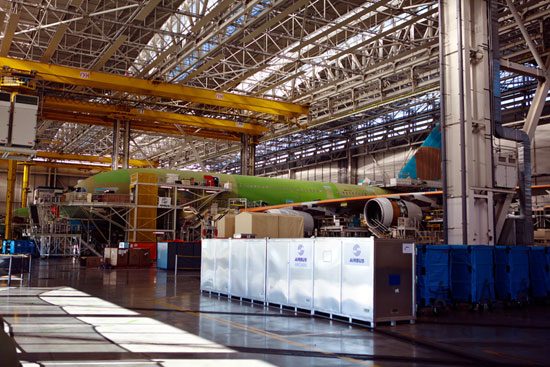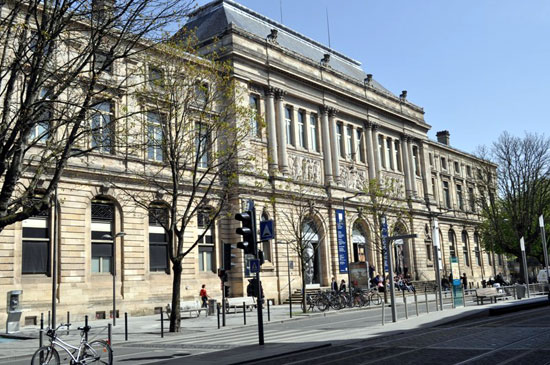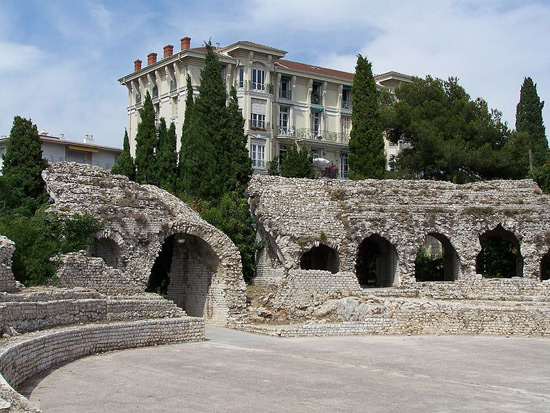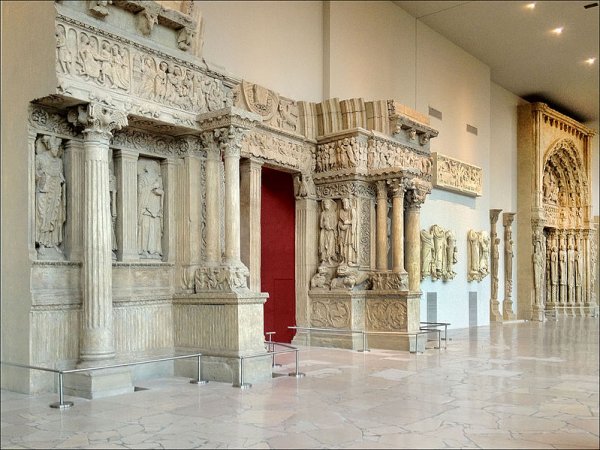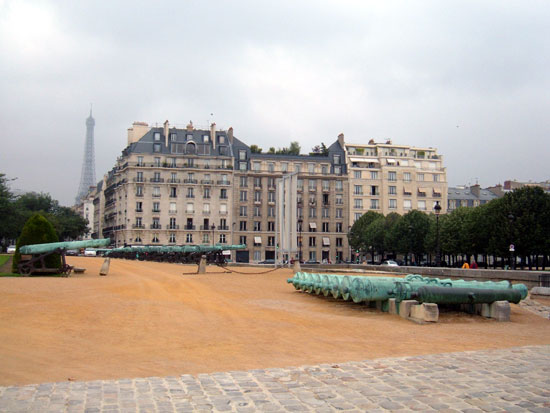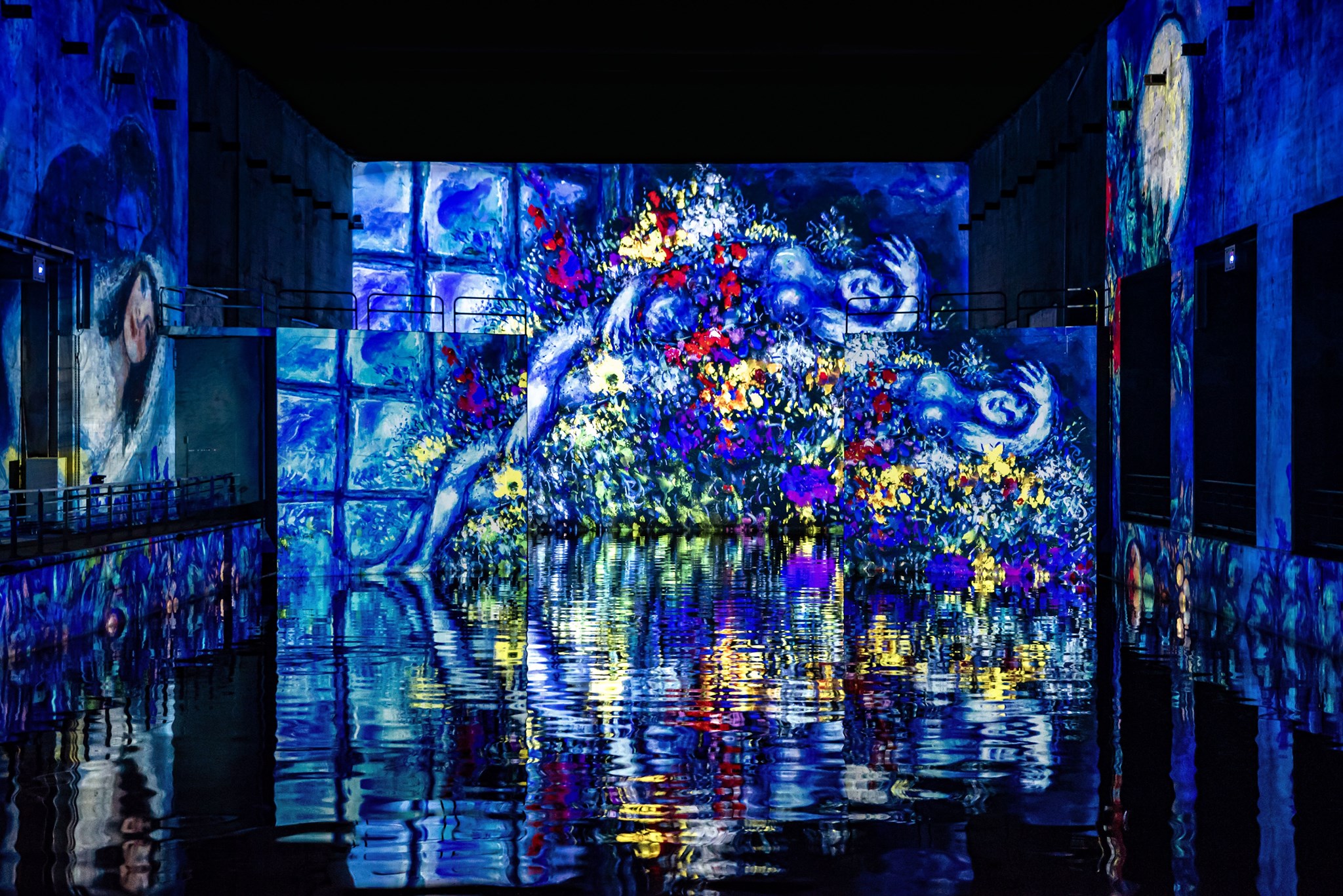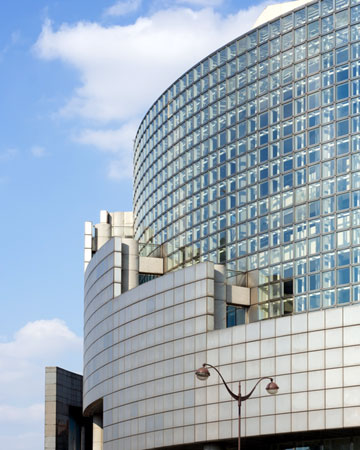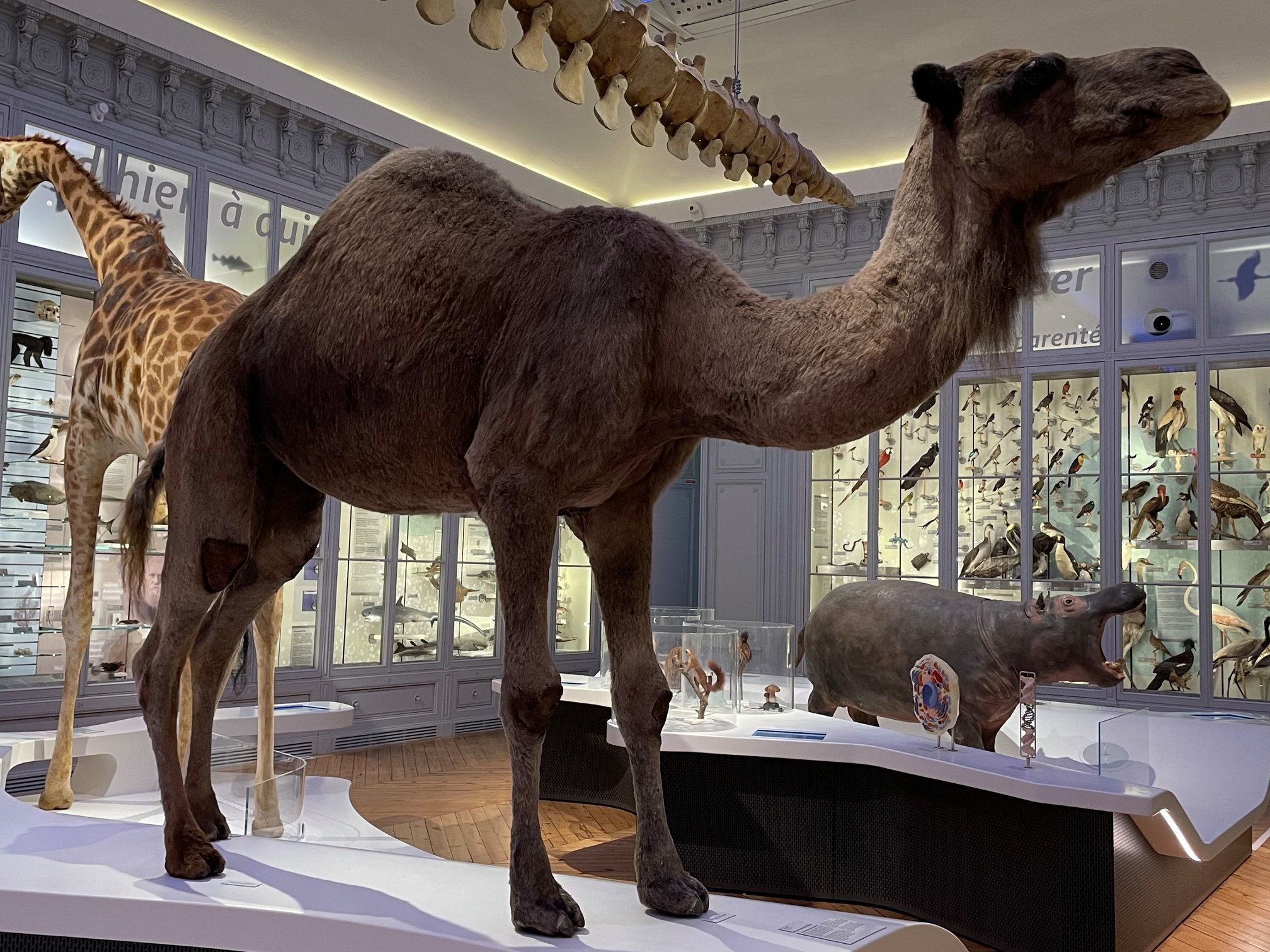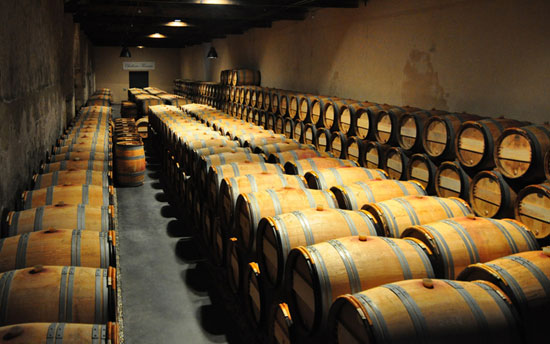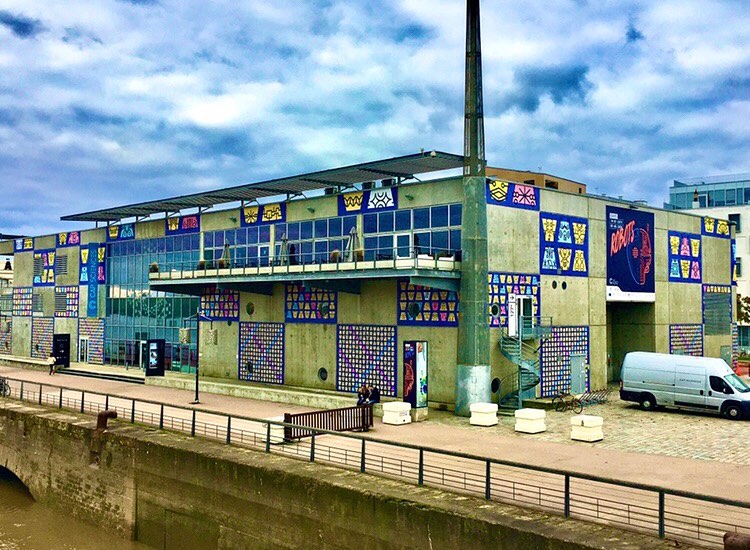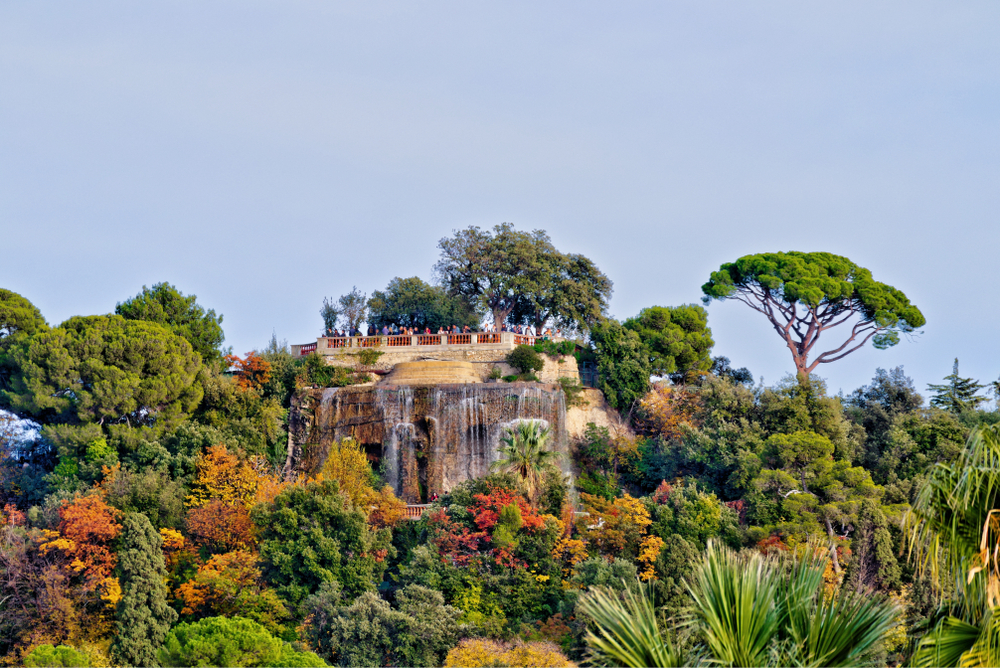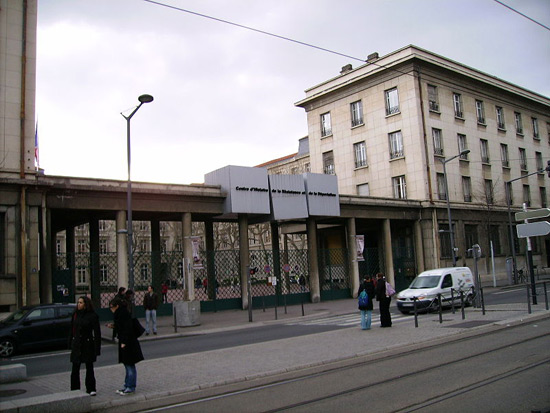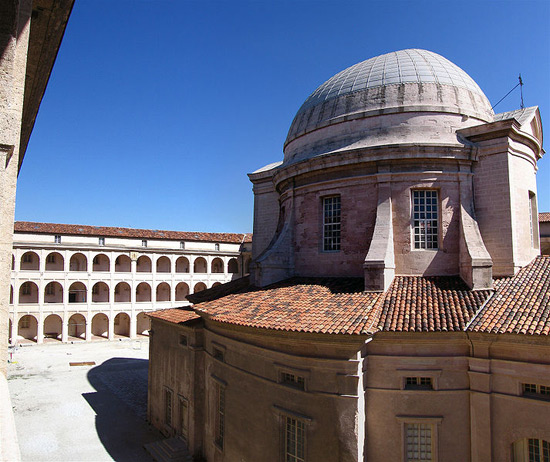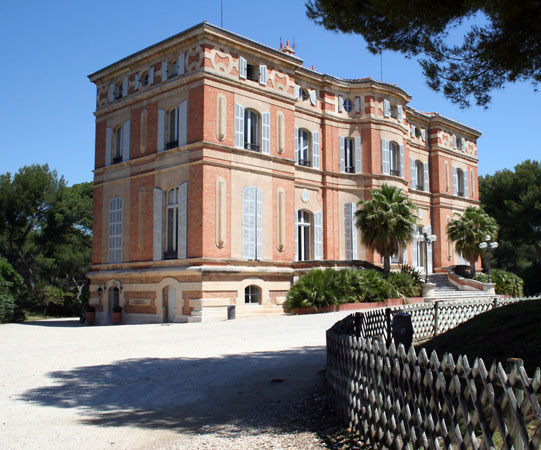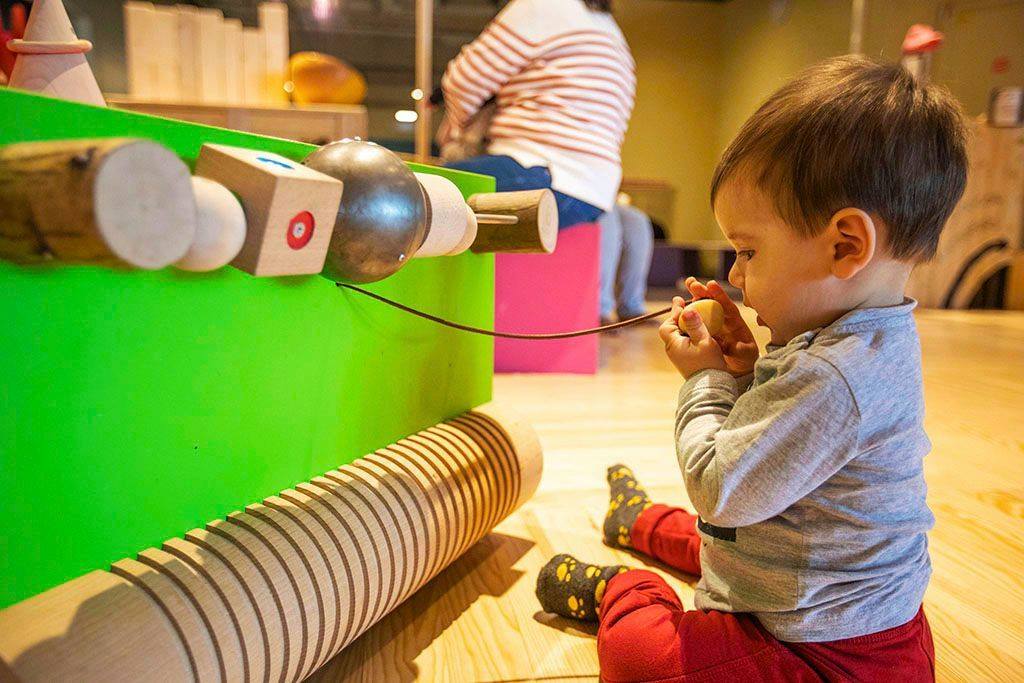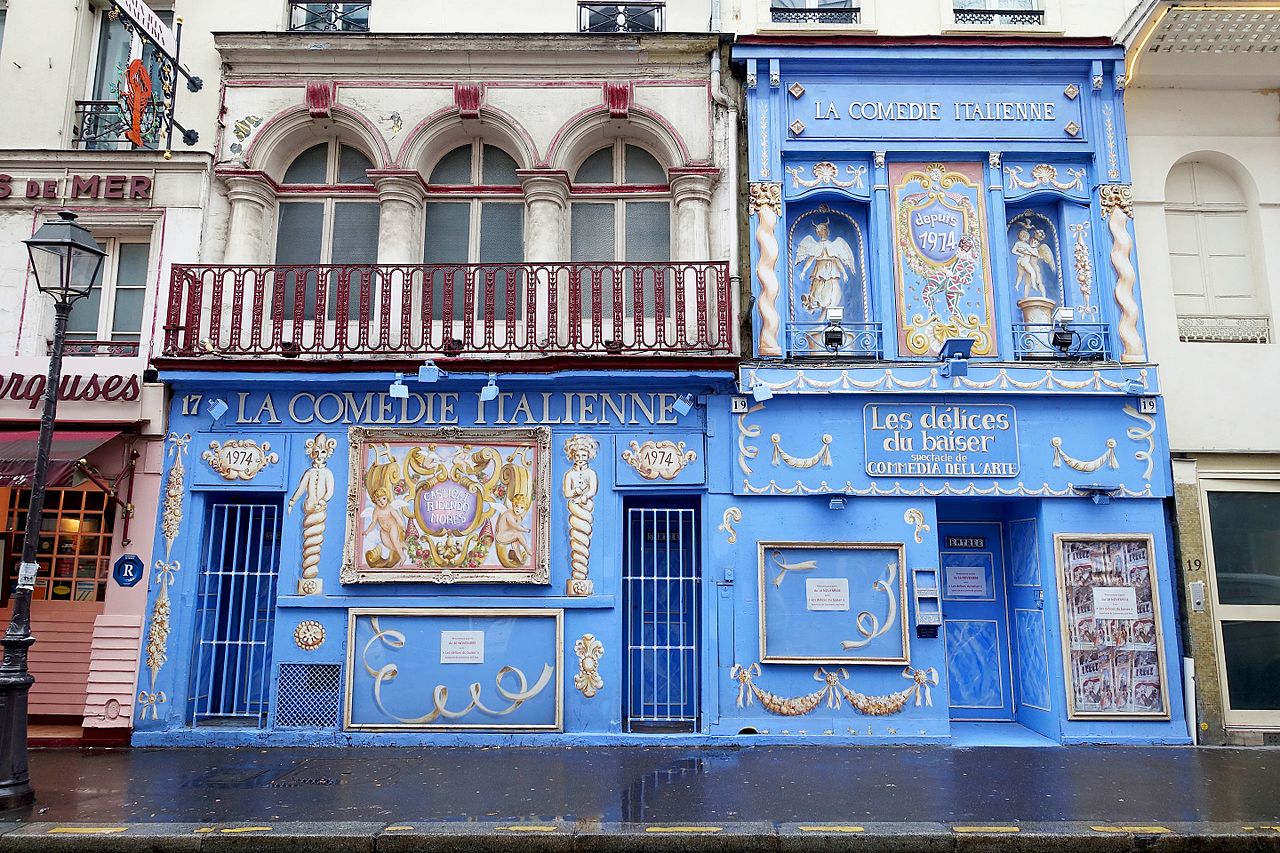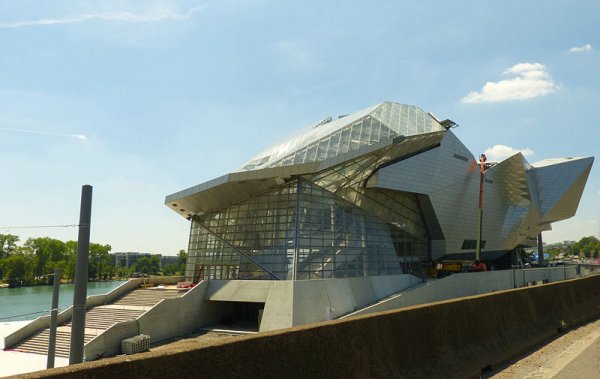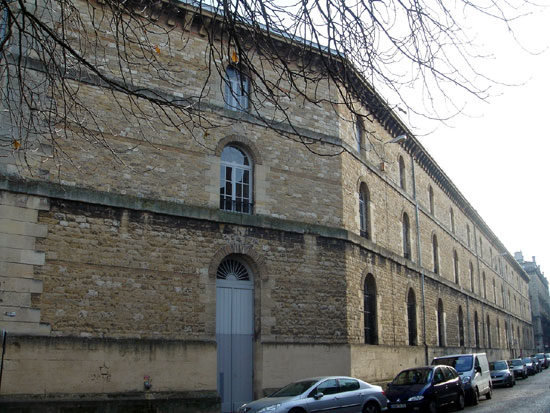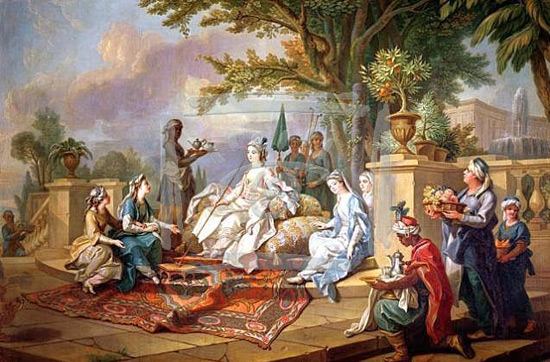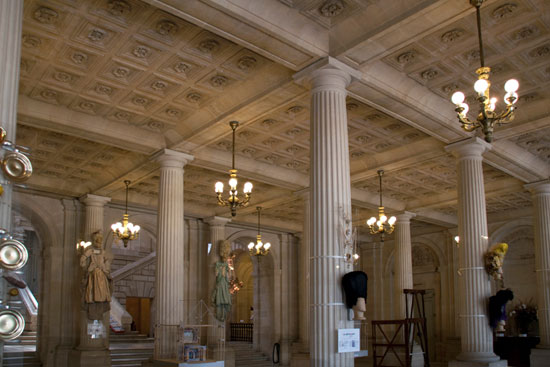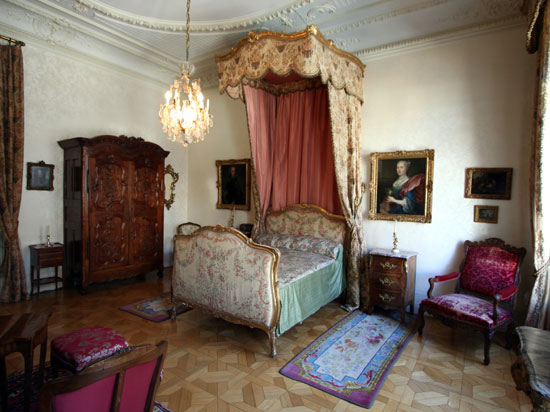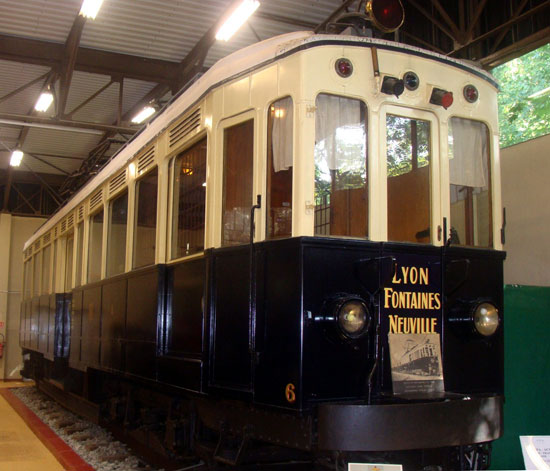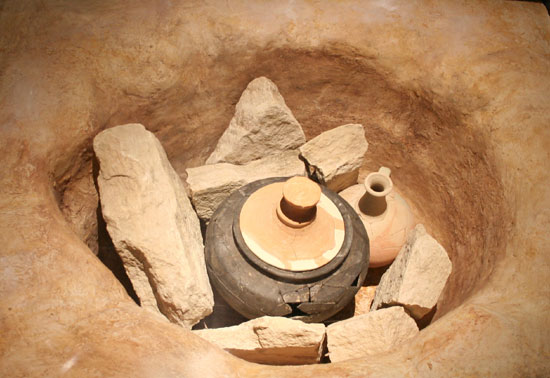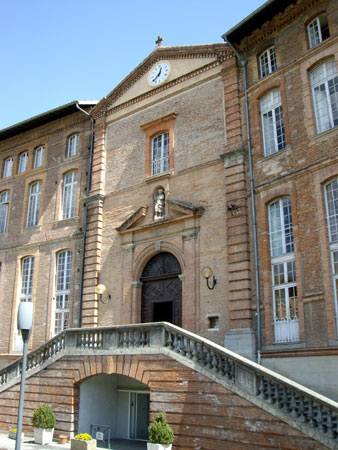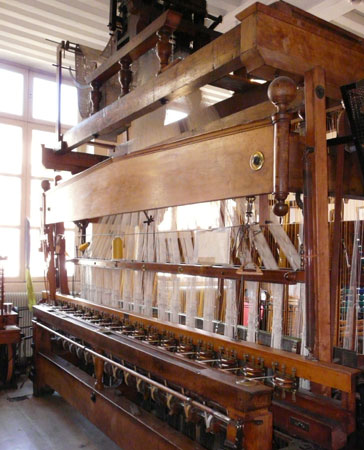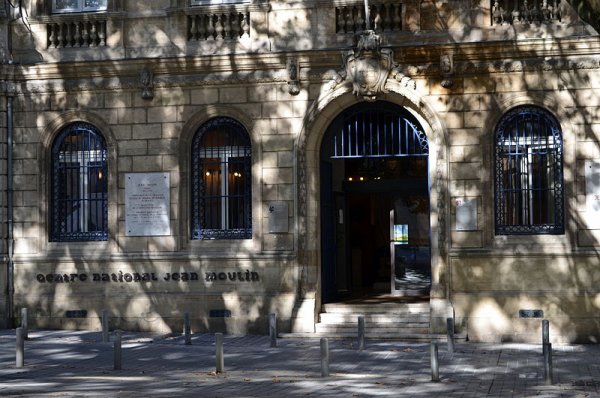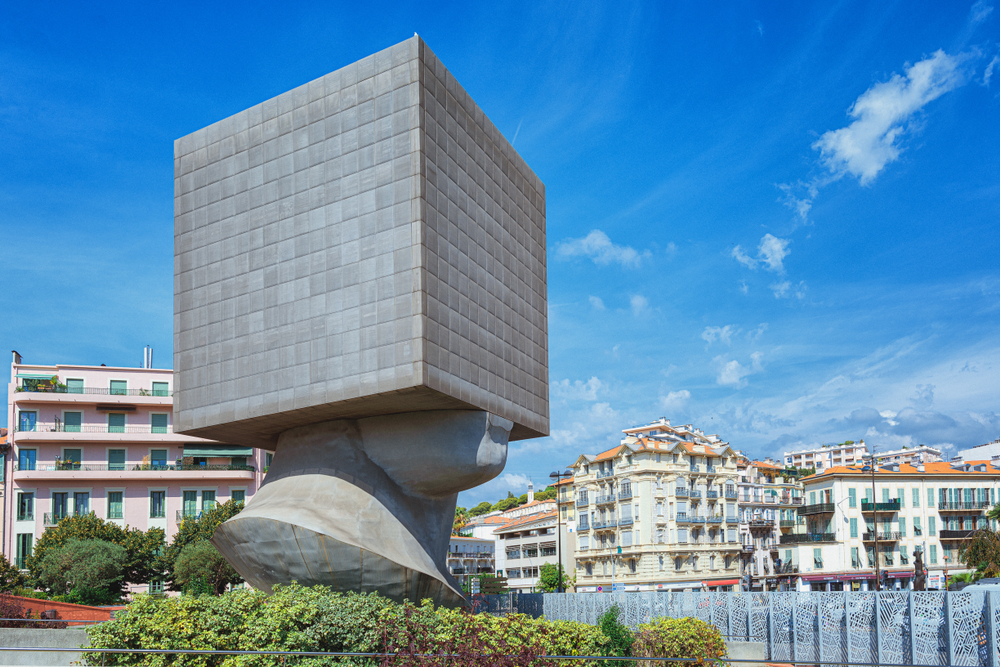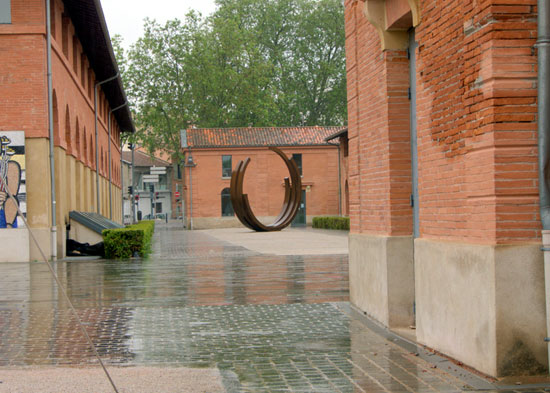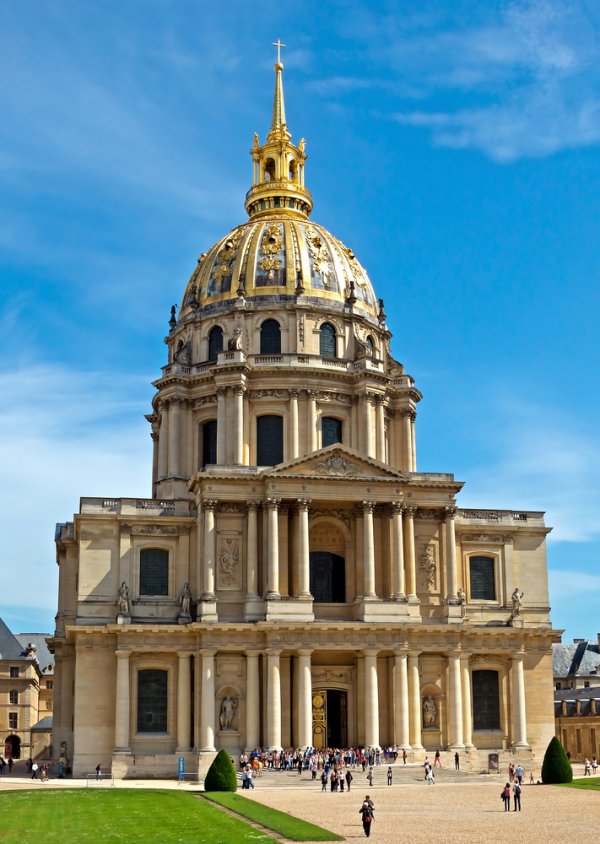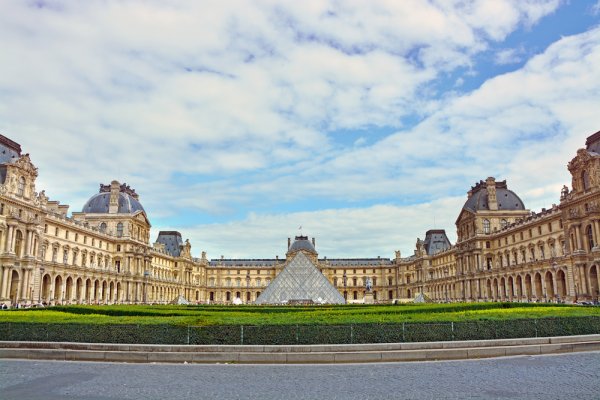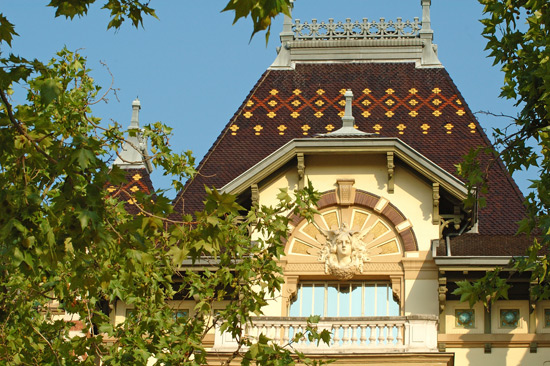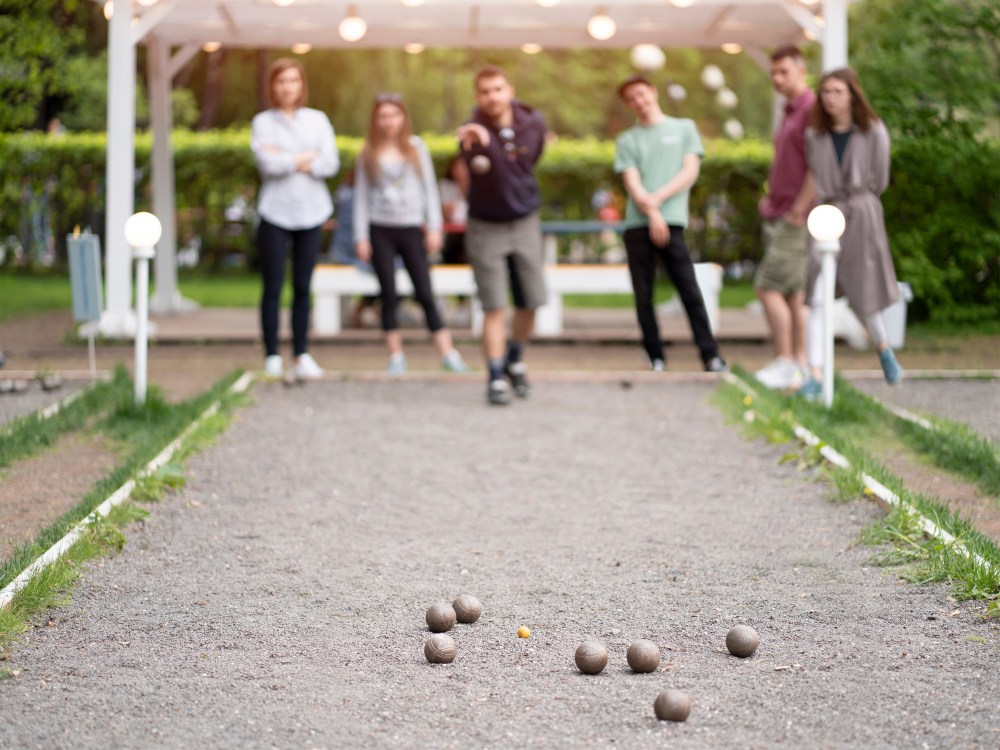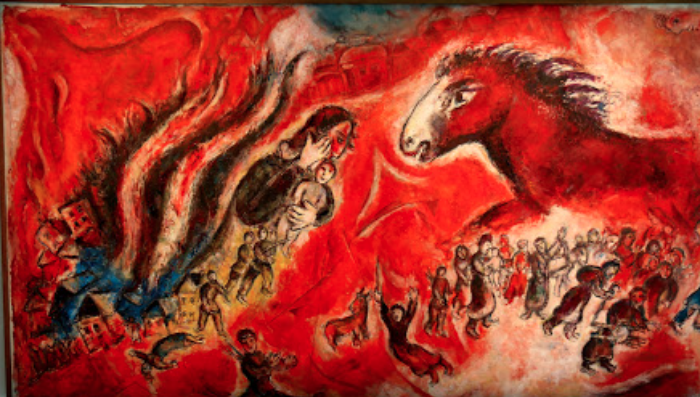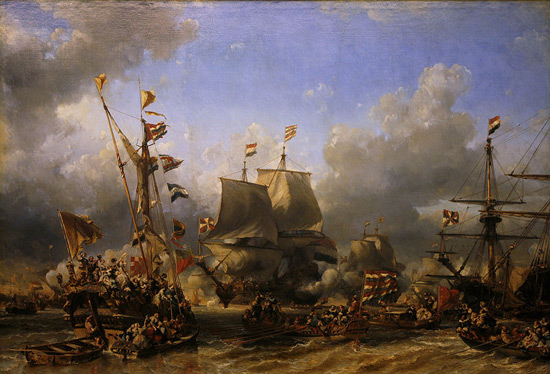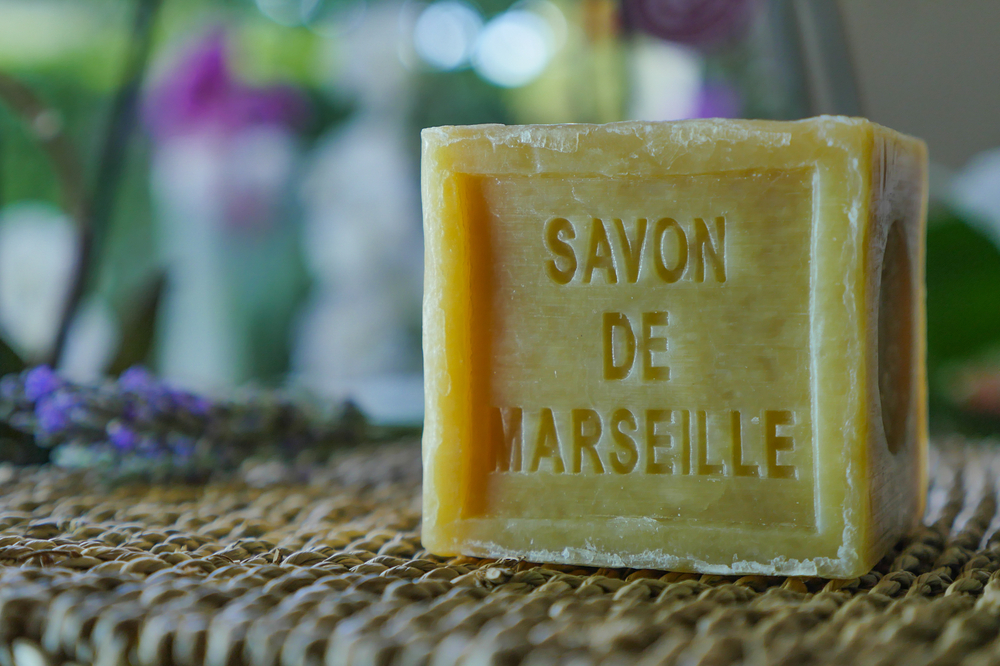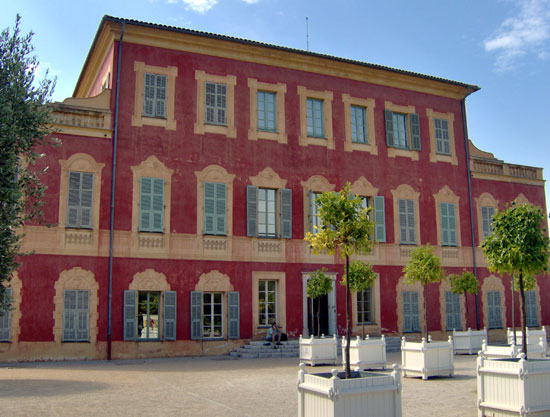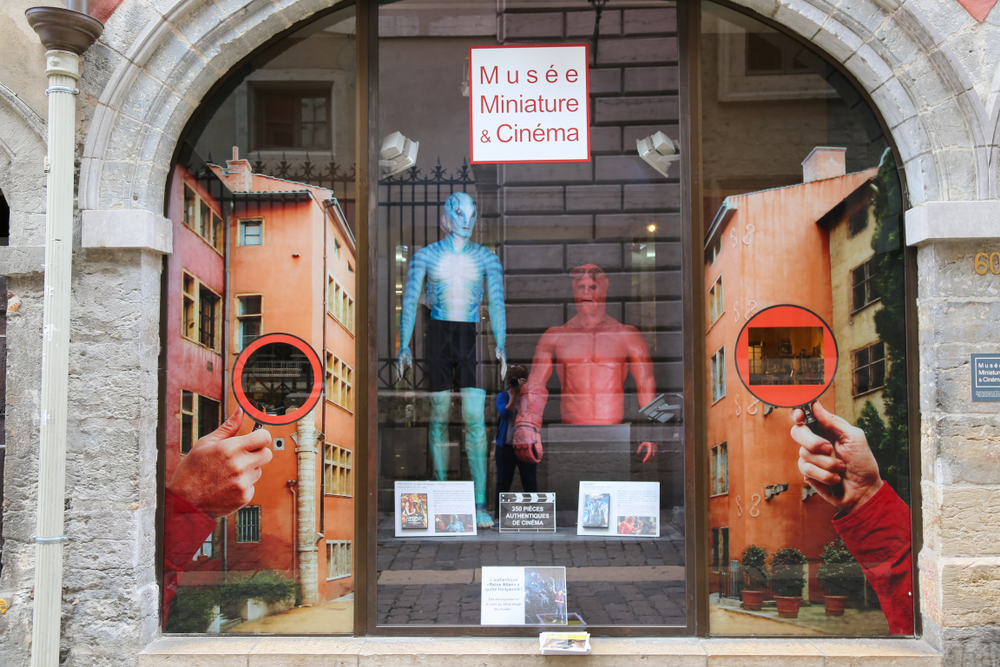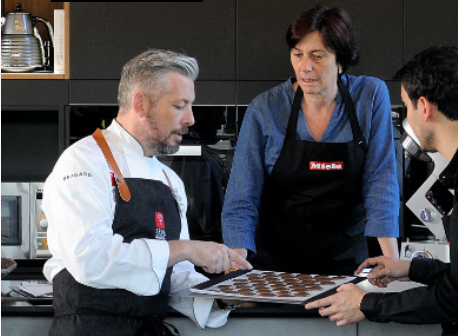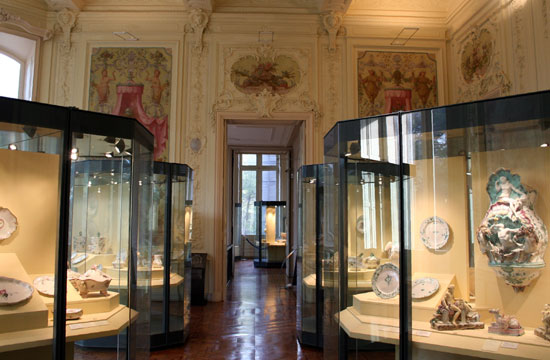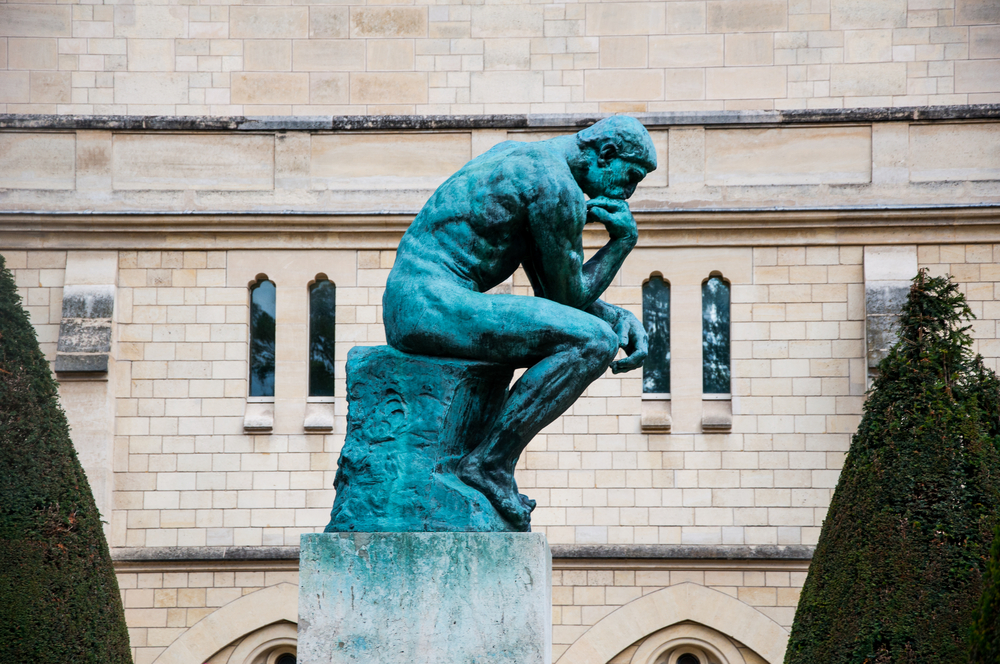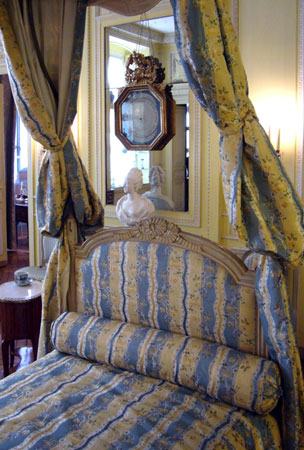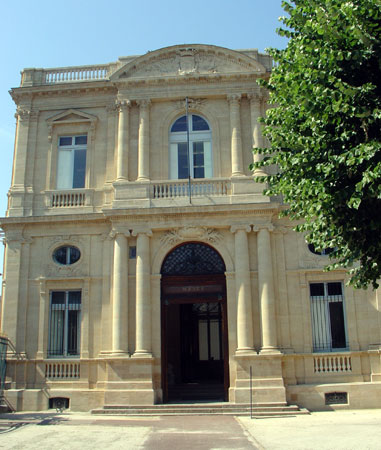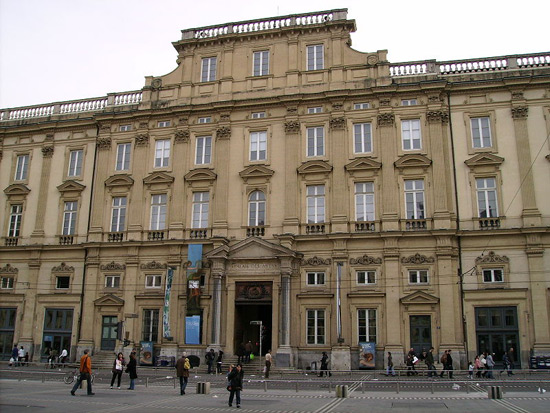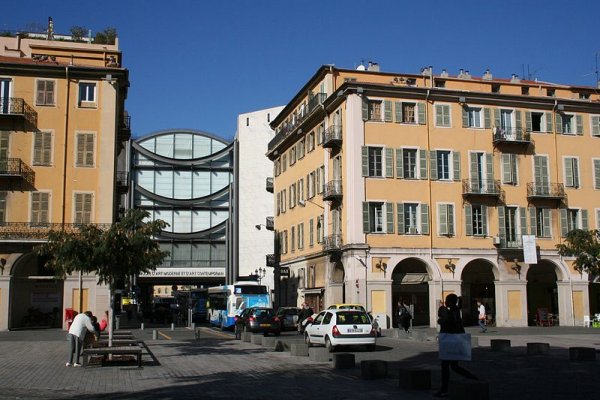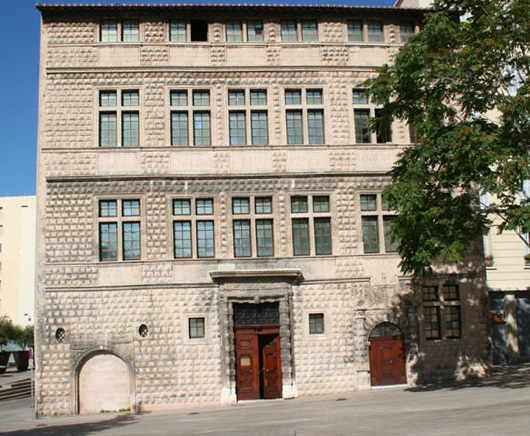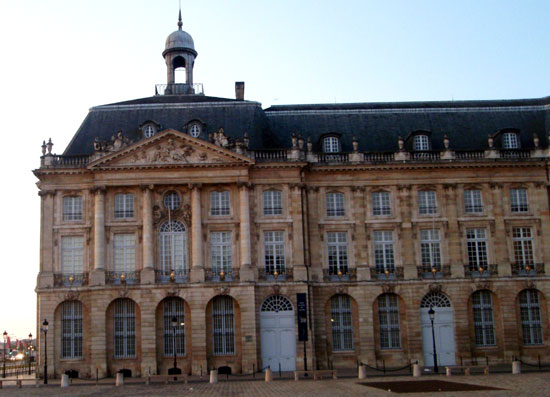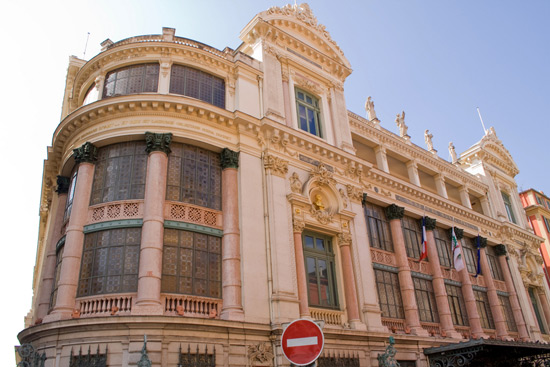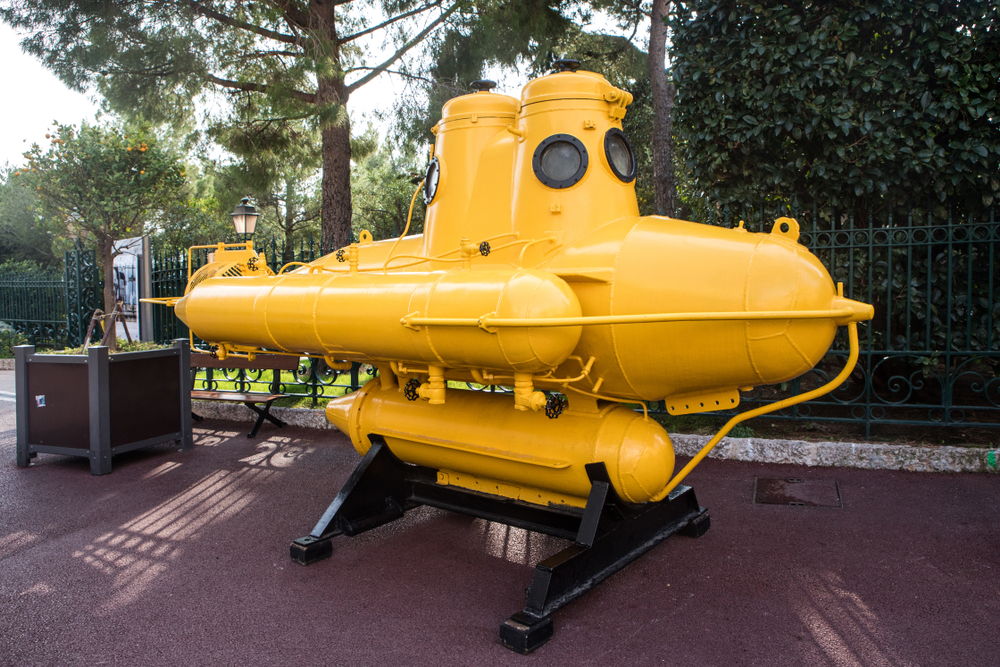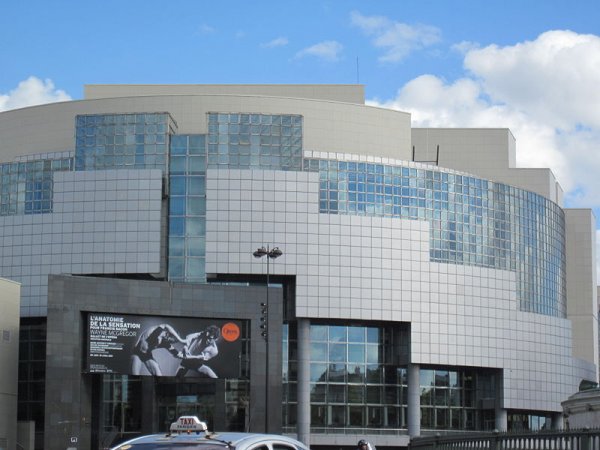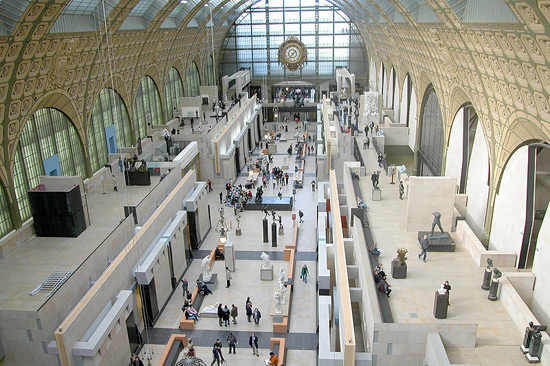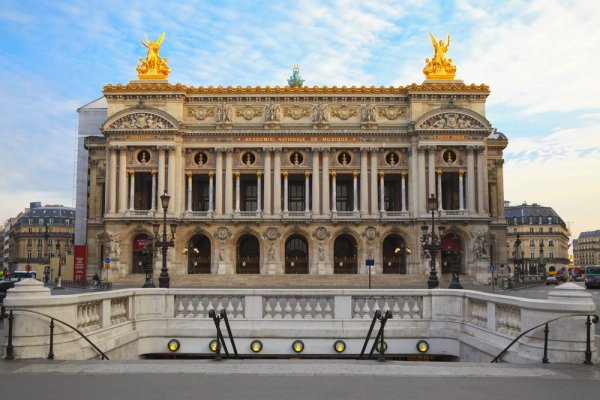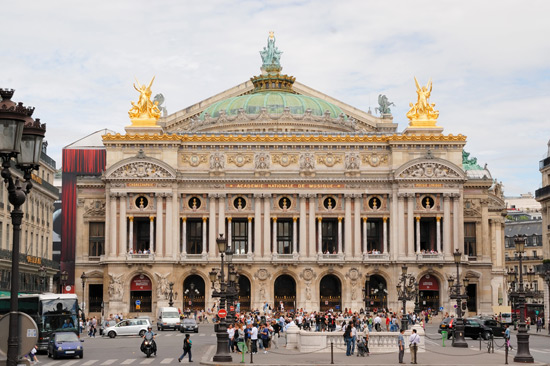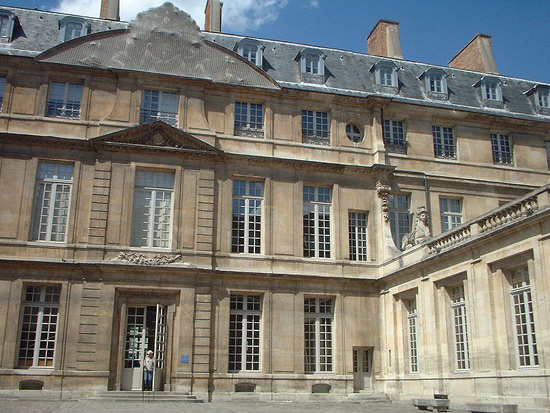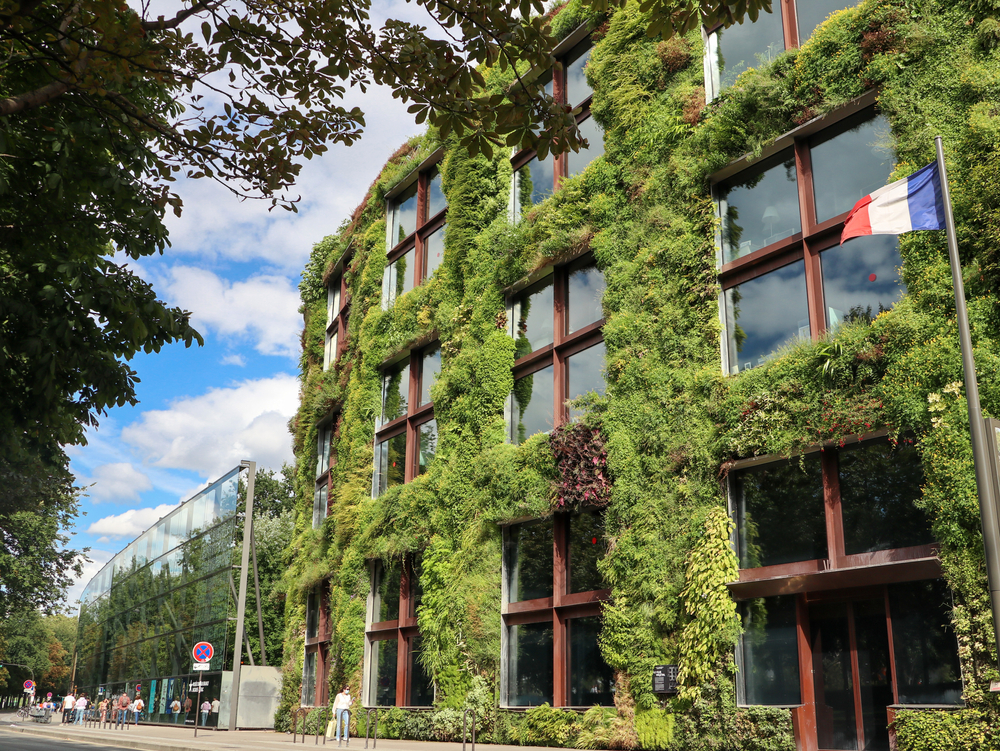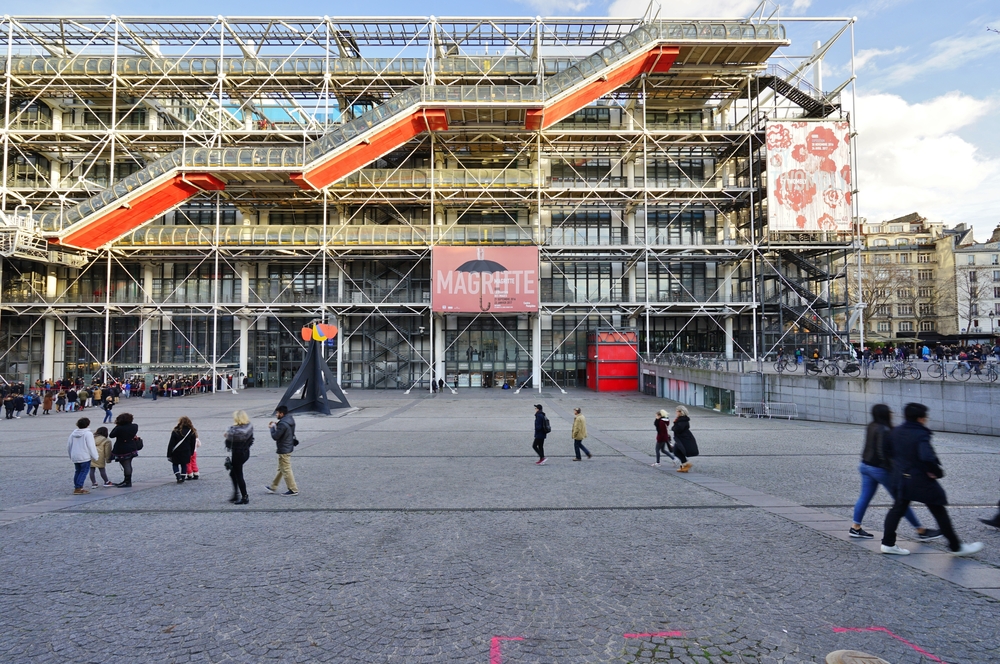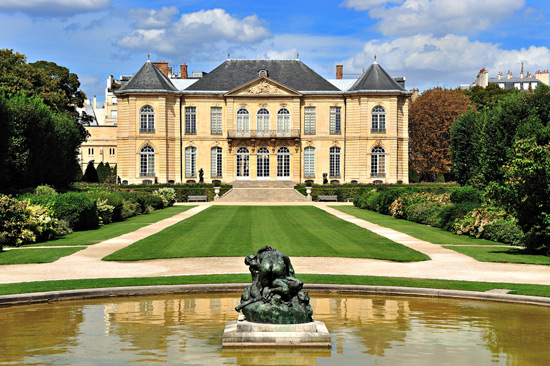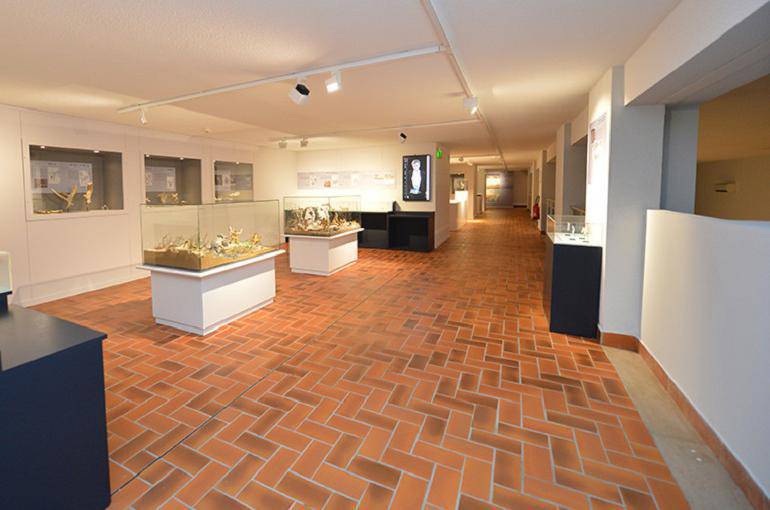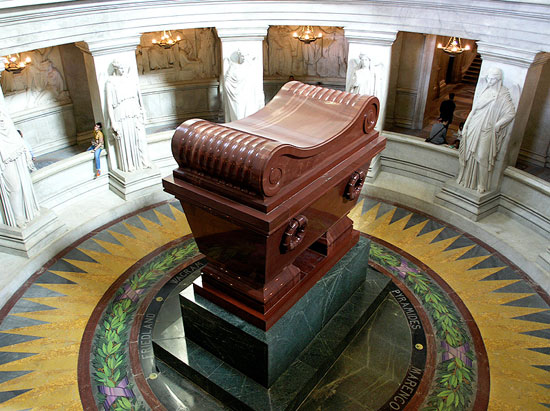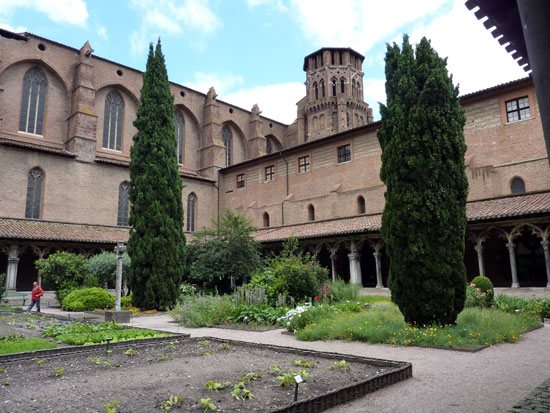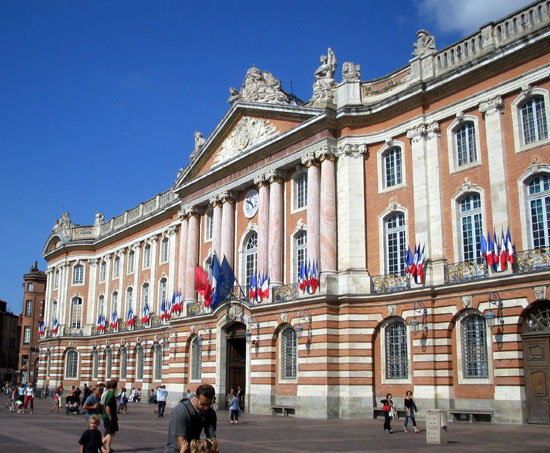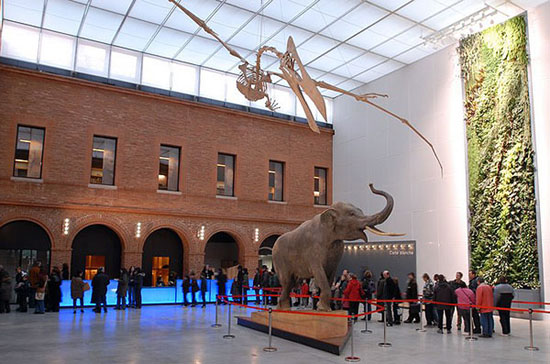Points of Interest
Airbus Aerospace Company
Rue Franz Joseph Strauss
Blagnac, Toulouse, France
Airbus is the aerospace company formed in 1970 by competing French, British, and German firms in order to match the big US aircraft manufacturers such as Lockheed and Boeing. In recent years, the Blagnac-based consortium has gone head to head with Boeing in the global passenger airliner market, making waves with its Airbus A380, a wide-body, double-decker jet that can carry 850 people. Visitors to the Airbus HQ can take the Jean-Luc Lagardère tour (named after the French engineer and entrepreneur who built a financial empire in aerospace, magazines, and horseracing). Tour the telemetry room, board a 16-meter (52-foot) fuselage section of the A380, see the Airbus training and design centers, plus the assembly line itself. Also on offer is the opportunity to board Concorde Number 1, the first supersonic jet liner to go into service (this model was earmarked as France's Air Force One).
Aquitaine Museum
Musée d'Aquitaine 20 Cours Pasteur
Bordeaux, France
Since kids get in for free at Aquitaine Museum, any of the intriguing historical offerings that hit home with them will be more than worth it. Though its first exhibitions in the 1780s were of precious gems, this jewel of a museum now covers archaeology, ethnographic collections from Africa and Oceania, and a comprehensive local history of the city. The exhibits take visitors from Neanderthal times right up to the 20th Century. In the prehistory section, look out for the French neolithic skull showing multiple boreholes—signs of the grisly ancient medical art of trepanning. There is a full-size Roman mosaic and a shipping section with different models of boats that came in and out of Bordeaux, among so much more. Check the museum website for operating hours and info on temporary exhibits.
Archaeology Museum of Nice
160 Avenue des Arènes de Cimiez
Nice, France
Long before the Russians came to the area, dazzled by the allure of the Cote d'Azur, the ancient Romans claimed Nice's environs. To this day, visitors can take a peak into the area's past, enjoying the ancient amphitheater, public baths, old streets, and Palaeochristian Episcopal Group. Opened in 1989, the archaeological museum here showcases artifacts from the Bronze and Iron Ages through the Dark Ages, including coins, ceramics, jewelry, tools, and sculptures. Located right next to the Matisse Museum, the archaeological museum is closed on Tuesdays and certain holidays.
Architectural Heritage Museum
Place du Trocadero
Paris, France
Few architecture fans have the luxury of touring the whole of France. With this museum, opened in 2007, you don't have to. Spread across three vast galleries are reproduced details of many of France's best-loved buildings, from mansions to municipal railroad stations. Among the plaster recreations in the collection are the stained glass windows of Chartres Cathedral, the curving staircase from Saint-Maclou church in Rouen, and an apartment from Le Corbusier's Cité Radieuse in Marseille. Visitors are advised to give themselves several hours-with 8,000 square meters (86,111 ft²) devoted to permanent exhibitions, there's a lot to see. Once housing the French Monuments collection, the building is also home to the French Institute of Architecture, its library and archives, as well as an architectural post-graduate academy. The museum is closed on Tuesdays.
Army Museum
129 Rue de Grenelles
Paris, France
This military history museum, located in the Hôtel des Invalides complex, may be notable for its connections with Napoléon Bonaparte, but there are other fascinating elements for visitors. Along with several uniforms and personal trophies belonging to the emperor, there's a large collection of cannons and field artillery, battlefield relics dating back to the Stone Age, and recently restored murals by Joseph Parrocel chronicling the military campaigns of King Louis XIV. One of the more unexpected highlights is the series of scale models in the Musée de Plans-Reliefs. Marshal Vauban, the 17th-century military engineer who became an expert at constructing (and breaching) fortified cities, designed them. Vauban was something of a polymath in his day, publishing forward-thinking treatises on everything from taxation to pig breeding. Look out for the complicated defenses, which the ingenious engineer thought up for the French town of Briançon.
Bassins de Lumières
Impasse Brown de Colstoun
Bourdeaux, France
Is it the digital art that seems to grow and flow over the walls that make this an alluring attraction, or the fact that this art gallery resides in a massive, former concrete bunker built to house Nazi U-boats? Whatever reason brings you here, this abandoned and repurposed former World War II submarine base offers a truly one-of-a-kind experience. Various exhibits have included works by French artists including Monet and Renoir, as well as Chagall and Klimt, ingeniously rendered to convey movement and images that seem to grow or recede in size. The floor to ceiling art is shown via projectors and covers walls some of which are more than 11 meters (36 feet) high and 91 meters (300 feet) long. Check the gallery’s website for hours and current exhibits.
Bastille Opera
L'Opéra de la Bastille Place de la Bastille
Paris, France
L'Opéra de la Bastille is France's most modern opera house. It was inaugurated on July 13, 1989, the 200-year anniversary of the storming of the Bastille. A previously unknown architect, Carlos Ott, was chosen from 756 entries to build this structure. The architectural design of this opera house reflects modern norms, and its glass structure sets it apart from other historical sites in this area. It has 2,723 seats, each offering an unrestricted view of the stage. The backstage is reputed to be highly modern, featuring the ability to move entire sets on or off the stage intact. This is the principal venue for the Paris National Opera.
Bordeaux Natural History Museum
5 Place Bardineau
Bordeaux 33000, France
Parents will be happy to discover the city’s Natural History Museum includes a Toddler Museum specially designed for children 6 years old and under. Kids will love the All Babies exhibit, featuring baby animals and answering simple questions about their lifecycles and behaviors. If that’s not enough of a draw, consider that the specimens inside amount to one of the country’s biggest collections. There’s fossils, shells, mounted skeletons, and insects among the over 4,000 items on display, and an overall focus on environmental awareness. Permanent exhibits include Aquitaine Coastline, Climate Sentinels, Africa Wild Savannah, and Eat Me If You Can, among others. Check the website for information on temporary exhibits, special events, and operating hours.
Bordeaux Wine Museum
41 rue Borie
Bordeaux, France
Bordeaux is one of the world's great wine regions, an area that has been growing grapes for more than two millennia. For centuries, the city's fortunes were directly connected with the viticulture industry of its 400 trading houses and 120,000 hectares. In this oenological museum, located in the palace of an 18th-century Bordelais aristocrat, vine-loving visitors can unearth the history of this famous red wine. Along with technical instructions on how vintages are created and stored in the 1720 cellars, the museum also outlines the role played by the negotiants, middlemen who not only brokered deals between growers and buyers, but also were often responsible for blending the different grapes to create commercially viable results. And if the knowledge whets your appetite, there's a tasting of two local wines at the end.
Bourse Palace
Palais de la Bourse 9 La Canebière
Marseille 13001, France
The Palais de la Bourse, located along Marseille's most famous boulevard, is younger than the institution it houses. France's first chamber of commerce was established in Marseille in 1599. Charged with defending the interests of commerce and the port, the chamber originally met in the town hall. When its importance outgrew this space in the 1800s, the Palais de la Bourse was constructed, its architectural goal being to achieve an extraordinary palace while allowing the traders to maintain their traditional outdoor business habits. In addition to the main historic Chamber areas, the building also is home to a small museum showcasing the commercial and maritime history of the city.
Cantini Museum
Musée Cantini 19 Rue Grignan
Marseille 13006, France
Located near the Palais de Justice in Marseille's city center, the Musée Cantini (built in 1694) was originally a private home before renowned scuptor Jules Cantini. Cantini donated it to the city in 1916 for the purpose of establishing a contemporary art museum open to the public. Today, the museum boasts one of France's finest collections of art ranging from 1900 to 1960. Art from 1960 to the present is housed primarily at the MAC (or Musée d'art contemporain de Marseille). Art aficionados will not want to miss the Picasso pieces housed here, as well as works by Derain, Marquet, Ernst, Masson, Balthus, and important young international artists.
Cap Sciences
Hangar 20, Quai de Bacalan
Bordeaux, France
A museum focused on science and discovery, Cap Sciences has something to fascinate all ages. There are permanent exhibits and youth workshops covering chemistry, photography, and robots, among others. Learn about things like molecular cooking, rocket building, or make objects using a 3D printer. Includes audio guides in English, as well as a shop and cafe. A visit to Cap Sciences is a tradition among the city’s schoolchildren, so rest assured that your kids will be engaged and informed. Check the website for information on special events, temporary exhibits, and operating hours.
Castle Hill
Montée du Château
Nice, France
On the famous rocky outcrop between Old Nice and the harbor sits Castle Hill, beloved by locals and visitors alike. While few sections of the old castle have survived, the area is celebrated for its breathtaking panoramic views of the city and sea. Kids can imagine what the castle was like while exploring. There are pine trees, carobs, figs, aloes, a gorgeous waterfall, children's playground, medieval ruins, and more. It was once the site of a military citadel, and there is a naval museum in its Bellanda Tower. Visitors can either brave the laborious climb to the top for free or take an elevator for a nominal fee. Plan on taking lots of photos at this scenic venue and even bring a picnic.
Center for the History of Resistance and Deportation
14 Berthelot
Lyon, France
This touching tribute to those who resisted the terror of Nazism during World War II is actually situated in the former headquarters of Gestapo leader Klaus Barbie. The museum offers multimedia exhibits that try to fathom the motives and ideas of this appalling character, who was only caught and tried for his crimes in the late 1980s. Weapons, radios, vehicles, films, and audio recordings from the time as well as an extensive document archive all add up to an authentic, if slightly macabre, experience.
Charitable House
La Vieille Charité 2 Rue de la Charité
Marseille 13002, France
Located in the Panier neighborhood, La Vieille Charité is an imposing baroque chapel embraced within a cloister-style courtyard. Built and designed by Marseillais architect Pierre Puget, the chapel was originally constructed as a free respite for the city's poor. It has also been used as a barracks, a soldiers' shelter, and affordable housing for those displaced by World War II. However, today the pink-hued triple-arcaded courtyard and chapel are home to bookshops, a café, and the marvelous Musée d'Archéologie Méditerranéenne (Museum of Mediterranean Archaeology) and Musée d'Arts Africains, Océaniens & Amérindiens (African, Oceanic, and American Indian Art Museum). This art museum contains extraordinary artifacts, including masks from all over the world.
Château Pastre
Avenue de la Madrague Montredon
Marseille 13008, France
Château Pastre is nestled between the Point-Rouge and Rolland caves perched above the city center in the Marseilleveyre hills. Countess Pastre bequeathed this magnificent country home and 120 hectares (297 acres) of wooded park space to the city in the 1800s. The woods have been converted to public gardens and an adventure playground for children. The home hosts an outstanding museum of pottery; its stunning collection documents the technical and artistic development of pottery-making. Admission to this museum and the grounds is free.
City of Science and Industry
20 Avenue Corentin-Cariou
Paris, France
With more than 50 interactive displays spread over five floors of high technology, this attractive site is ideal for families. The museum’s features include computer games based on marine science, space, and sound; a 260-seat planetarium; greenhouse; and La Géode, an IMAX cinema showing movies on nature. It is particularly focused on French engineering, with exhibits such as models of the Ariane space rocket, Mirage jet fighter, and Le Nautile, the yellow manned submarine that has taken oceanographers to depths of 6,000 meters (19,685 feet). Several smart features include a pool around the building, which enables sunlight to reach the lower levels. Check the website for special events and hours of operation.
Comédie Italienne
17 Rue de la Gaité
Paris, France
A little theatre devoted to Italian-language plays, Comédie Italienne opened in 1980. It is housed in a former police station, and the Baroque façade of the building gives the theater an appealingly vintage charm. Previously painted red, then in the traditional colors of the harlequin, and finally in the flashy blue it currently sports, the façade features some intriguing details such as little statues of cherubs and the Latin inscription Cadtigat ridendo mores, meaning “One corrects customs by laughing at them.”
—Information provided by Paris Convention and Visitors Bureau
Confluences Museum
Musée des Confluences 86 Quai Perrache
Lyon 69002, France
Located near the picturesque confluence of Lyon's two rivers, this attraction is not only a feat of contemporary architecture but an edifying discovery museum. The building is one of a kind, consisting of a see-through steel-and-glass bubble crowned by a cloud-like structure. The 10 exhibition areas comprise displays on the history of silk and "interactive exhibitions" on cultures of the world. Dinosaur skeletons and a 1,000-year-old Caucasus tomb are among the highlights as well as a giant meteorite that visitors can touch. A Center for Conservation organizes international conferences and educational visits. There is a science center and anthropology museum here as well.
Contemporary Art Museum of Bordeaux
7 rue Ferrère
Bordeaux, France
Located in the Chartrons neighborhood, once the base of the city's prosperous merchant class, the Museum of Contemporary Art is housed in a former 19th-century commercial warehouse. This gray stone neoclassical structure might look stolid and workmanlike from the outside, but its interior is a sculptor's paradise, with cavernous chambers beneath regular geometric stone vaulting. The permanent collection numbers 700 pieces, drawing together the works of nearly 150 artists. The museum aims to present artworks by innovative French and international artists, including Sol Lewitt, Richard Long, Daniel Buren, and Claude Viallat. There are regular temporary exhibitions, featuring the likes of European, Latin American, and North American artists such as Tacita Dean, Gabriel Orozco, Jonathan Monk, and Mario Ybarra, Jr. There's also a library, a bookshop, and a cool little rooftop cafe, which feels like a secret above the city streets.
Fine Arts Museum of Nice
Musee Des Beaux-Arts 33 Avenue des Baumettes
Nice, France
Housed in the former abode of Ukrainian Princess Elisabeth Vassilievna Kotchubey, Musee Des Beaux-Arts has a beautiful collection of works from the masters of the Second Empire and the Belle Époque. This museum opened in 1928 and features works from famed poster artist Jules Chéret, who lived and worked in Nice during his final years, as well as other artists of the French Riviera. The museum is also home to ceramics by Picasso, sculptures by Carpeaux, Rude, Rodin, and Tarnowsky, and paintings by Monet, Dufy, Constant, Laurencin, Merson, Sisley, Vuillard, and more. Admission to this museum is free, and free guided tours are offered on Wednesday afternoons.
Grand-Théâtre
Place de la Comédie
Bordeaux, France
Completed in 1780, this harmonious neoclassical theater looks more like a state building than a performance venue. This might explain why the Grand-Théâtre served briefly as the home of the National Assembly in 1871, when France was in the midst of a humiliating military defeat by the Prussians. Designed by French architect Victor Louis, it's a striking and regular structure faced with 12 Corinthian columns, each one surmounted by a female figure (the 12 statues include three Greek goddesses and the nine muses). If you can, buy an upper circle ticket for an opera or ballet performance. The view from the top of the 1,100-seat auditorium might be vertiginous, but it's the best way to see the marvelous interior, including the dome painting by François Roganeau. Noted for its acoustics, this venerable venue has hosted some memorable performers over its 230 years, including Franz Liszt and Placido Domingo. It is home to the Opéra National de Bordeaux.
Grobet-Labadié Museum
Musée Grobet-Labadié 140 Boulevard Longchamp
Marseille 13001, France
Musée Grobet-Labadié is housed in a 19th-century hôtel particulier along the Longchamp near the palace. This hotel and the collection housed within once belonged to Marie Grobet, the daughter of a prominent Marseillais businessman, Alexandre Labadié. Gorbet and her father gifted the city with their estate and collection of art in 1919. Their collected works include Louis XV and Louis XVI furnishings; medieval Burgundian and Provençal sculptures; 17th-century tapestries; German, Italian, French and Flemish paintings from the 15th to 19th centuries; and Italian and French ceramics from the 16th and 17th centuries. The museum is closed on Mondays.
Henri Malartre's Museum of Automobiles
Chateau de Rochetaillee, 645 Rue de Musee Rochetaillee-sur-Saone
Lyon, France
This collection of 120 vintage cars inside a converted château isn't your typical Lyonnais museum, but is one that will stay in the memory. The romantic bank of the River Saone might seem an unlikely location for Hitler's Mercedes, but it is here, along with a Renault Espace that belonged to Pope Jean-Paul II. Bizarre forerunners to the modern car are on show here, including steam-driven "horseless carriages" dating from the turn of the 20th century. Motorcycling enthusiasts will enjoy the 50 or so bikes of varying ages on display. Traditional Lyonnais modes of transport such as trams and the first underground trains are also on view.
History Museum
Centre Bourse Shopping Centre
Marseille, France
History buffs and anyone wishing to learn more about this ancient city will enjoy the Musée d'histoire, incongruously located amidst Marseille's bustling shopping center, Centre Bourse. The museum contains a vast collection of artifacts documenting the Greek and Roman settlements in ancient Marseille, and features the world's best-preserved hull of a boat dating back to the 2nd century. In the adjacent archeological gardens, called the Jardin des vestiges, one can find antiquated remains from Marseille's Hellenic port, a necropolis, and other features. This museum was opened in 1983 and also includes a documentation center, library, and video collection.
History of Medicine Museum
Hôtel-Dieu St-Jacques 2 rue Viguerie
Toulouse, France
Anyone with more than a passing interest in healthcare will appreciate this diverse and distinctive medical museum, which is open on Thursdays and Fridays and on various festival days. Located in the splendid setting of the Hôtel-Dieu, two museums illuminate surgery, hospitals, and the teaching of medicine throughout 700 years of Toulouse's history. The first is the History of Medicine Museum, which uses sculptures, paintings, and scientific exhibits to trace man's deepening understanding of anatomy. The second is dedicated to various medical instruments used through the ages. Occupying just two rooms, it's rather tucked away, but nevertheless contains some bizarre and fascinating pieces, including drills once used for relieving pressure on the brain (in the gruesome medieval process known as trepanning). Many of the exhibits in these unusual museums are a little ghoulish-look out for the moulages, horribly realistic models used by medical students, which illustrate different bodily injuries and ailments.
House of the Canuts
Maison des Canuts 10–12 Rue d'Ivry
Lyon, France
A fascinating tribute to the tough lives led by Lyon's silk weavers of yore, the House of the Canuts was a sanctuary for those who in 1830–31 rose up against the ruling class over the issues of low pay and poor conditions. While many of them were killed, certain important concessions were won, which are celebrated by this exhilarating hybrid of workshop, gift shop, and museum. Enjoy history in action with live demonstrations of an actual Jacquard loom that was used by these workers. The museum shop offers plenty of silk products weaved in the Rhone region: hats, ties, socks, scarves, trimmings, and woven images.
International Museum of Native Art Anatole Jakovsky
Château St-Hélène Avenue de Fabron
Nice 06200, France
This modern art museum is located in the regally restored Château Ste-Hélène, once home to French perfumer François Coty. The museum itself was opened in 1982 and largely owes its existence to the generosity of Anatole and Renée Jakovsky, globally renowned art critics who donated the majority of their collection to the museum. This collection includes 600 drawings, engravings, sculptures, and canvases completed by artists all over the world and represents diverse art works from primitive paintings to contemporary pieces. Featured artists include Bauchant, Bombois, Rimbert, and Séraphine, not to mention less famous but nevertheless masterful Croatian, Haitian, and Brazilian artists, to mention but a few. The museum is open from 10am to 6pm Wednesday through Monday, except for some holidays.
Jean Moulin National Centre
Centre National Jean Moulin Place Jean Moulin
Bordeaux, France
Established in 1967, this cultural center occupies a fascinating middle ground in French history, commemorating some of the country's darkest moments (the deportation of Jews to the Nazi death camps) along with several of its finest memories (the Resistance movement and the part played in the Liberation by the Free French troops). The museum was founded by Jacques Chaban-Delmas, a former mayor of Bordeaux and a former Resistance fighter himself. It is named after Jean Moulin, the French soldier, administrator, and Resistance lynchpin whose murder at the hands of the Gestapo made him an icon of the underground fight against the Nazis. Today, the museum's role is twofold. It acts as a documentation center, aggregating paperwork, information, and exhibits from the period of German occupation, while also playing an educational role for generations of French students, with exhibitions, lectures, and a historical commentary for visitors.
Jeu de Paume National Gallery
Galerie Nationale du Jeu de Paume Place de la Concorde
Paris, France
Although this building is now a contemporary art gallery dedicated chiefly to photography exhibitions, it has gone through several intriguing iterations since it was established in the mid-19th century. The name Jeu de Paume refers to its original incarnation, as a real tennis court (the "real" once stood for "royal"-the sport was played by kings including England's Henry VIII). During World War II, the gallery was a storehouse for art looted by the Nazis. Reputedly, they offloaded some of the "un-German" pieces onto the international art market. Notoriously, they also burned several pieces, including works by Dalí and Picasso. For several decades, the gallery housed works by the Impressionists, which were moved to the Musée d'Orsay in 1986. In recent years, it has carved out a solid reputation (visitor numbers for 2008 topped 320,000) for contemporary photography, videography, and Internet art.
La Tête Carrée Library
Esplanade Kennedy
Nice 06000, France
If you think a visit to a French library sounds boring, think again. Because even if you don’t go inside, gazing at the sight which is La Tête Carrée Library is a surreal and thought-provoking experience. The library is also a sculpture, depicting a neck and the lower part of a chin, with the rest an imposing symmetrical block where a head would normally be. Created by French artist, Sacha Sosno, the library/sculpture is called “Thinking Inside the Box.” Perhaps surprisingly, inside the sculpture are three floors of library, Nice’s main branch, which stands 25 meters (85 feet) tall. A evening stroll by the library reveals lights within, a glowing indication that there are indeed people within, thinking inside this box.
Les Abatoirs Museum of Modern and Contemporary Art
Les Abattoirs - Art Contemporain et Moderne 76 Allées Charles de Fitte
Toulouse, France
Originally designed by Urbain Vitry, professor at Toulouse's school of arts, this 19th-century slaughter yard that once held herds of cows is now lined with canvases throughout its vaulted chambers. In 1995, French architects Antoine Stinco and Rémi Papillault won the international competition to turn the neoclassical brick complex into a contemporary art venue. Since its opening in 2000, Les Abattoirs has provided a significant cultural center on the Garonne's Left Bank. Among its collection are works by French and international artists of note, including Jean Dubuffet, Marcel Duchamp, Robert Mapplethorpe, and Brassaï. Much of the collection, spread across 6,000 square meters, derives from post-war artistic movements like Arte Povera, Tachisme, and Abstract Expressionism. The gallery's most prized piece is probably Pablo Picasso's La Dépouille du Minotaure en costume d'Arlequin, a theater curtain that depicts a Minotaur in an allegory about World War II.
Les Invalides
129 rue de Grenelle
Paris 75007, France
Construction for Les Invalides was completed in 1678. The complex was originally designed and used as a retirement home and hospital for veterans of war until the early 20th century. Les Invalides also is the site of Napoleon Bonaparte's tomb, and the chronicles of Napoleon's victories are etched on its walls. King Louis-Philippe arranged for Napoleon's remains to be buried at St. Jerome's Chapel in 1840. In 1861, Napoleon's remains were placed in a red tomb under the dome at Les Invalides. The Institution Nationale des Invalides continues to operate a retirement home and medical centers for disabled veterans in some of the buildings on site. Other buildings in the complex include museums and monuments, all relating to the military history of France.
Louvre Museum
On Rue de Rivoli, North of the Seine River
75001 Paris, France
There is so much to see at this world-class museum that a day wouldn’t be enough, so how about get a family tour and take in the highlights? Your older tweens and teens who know a little about art history can appreciate the many landmark pieces in the Louvre, like the Mona Lisa, Venus de Milo, and Winged Victory. Tours are offered by several companies and usually range between two and three hours, some focused around specific themes. See the royal jewels, frescoes, and famous works by French and Italian artists at the museum you’d hate to say you skipped. Morning tours help avoid the large crowds for which the Louvre is known.
Lumière Museum
25 Rue du Premier Film
Lyon, France
Lyon's significance in the story of cinema cannot be understated, for it was here that Auguste and Louis Lumière made the first cinematic recording in 1895. (Their subject matter was Lyonnais factory workers eagerly exiting their workplace at the end of a hard day.) This museum is located inside the attractive art nouveau house once belonging to the brothers' father. It showcases the original recording equipment used by the brothers, the "photorama," an early projection system, an "evolution counter" displaying machines that were the forerunners of the Lumière's cameras, and inventions made by the brothers for other fields such as medicine and clothes making.
Lyon Opera House
1 Place de la Comedie
Lyon, France
The cultural heart of Lyon, this venue was the brainchild of Jacques-Germain Soufflot, one of France's best-loved architects. Built in 1756, the most remarkable aspect of its design is the Italian influence, especially on the horseshoe-shaped auditorium. Redesigned in the 1980s to triple its space, its seating capacity is now 1,100. The Opera House employs a permanent in-house conductor and children's choir. Jazz bands play in the café, which serves typical Lyonnais pastries and confectionery.
Maison de la Boule
4 Place des 13 Cantons
13002 Marseille, France
Those familiar with playing bocce ball will see it’s a significant part of life in Marseille, where the game is called pétanque. Within the broader category of boules sports, with similar games called raffia, lawn bowling, and bocce, courts for playing pétanque are found throughout Marseille, called boulodromes. Visit a mini museum that recounts the history of the boules game from antiquity to the present day. See a wide range of boules from all periods on display, along with posters and other advertising memorabilia. You will also find a display of every manufacturing stage, a collection of films for ongoing viewing, photo slide shows, and most importantly, a mini boules pitch to check your skills and test your newly acquired boules. Gifts and souvenirs are available for purchase in the shop area of this free museum.
– Information provided by Maison de la Boule
Marc Chagall National Museum
Marc Chagall Biblical Message Museum Avenue du Dr-Ménard
Nice 06000, France
Perched above Nice's city center and nestled amongst olive, cypress, and oak trees, the Marc Chagall Biblical Message Museum awaits discovery. Devoted to its namesake's treatment of biblical themes, the museum contains over 600 biblically inspired works, including drawings, oils, gouaches, pastels, enormous canvasses and tapestries, beautiful mosaics, stunning sculptures, and superb glasswork in the concert room decorated by Chagall himself. Chagall was born in Russia and immigrated to France, becoming a citizen in 1937. He and his wife donated his impressive collection of works to France in 1966 and 1972.
Maritime Museum of Nice
Musée Naval Promenade des Anglais Parc du Château
Nice 06000, France
Nice's Maritime Museum, or Musée Naval, usually only receives passing reference by those talking up the beautiful park and other features on Castle Hill. However, this charming and spacious museum is a delight for those who find sailing and other maritime ventures appealing. This museum features a fascinating collection of arms and weaponry from past naval brigades, intriguing antique navigational devices, and sea-themed paintings and engravings. The exquisite, painstaking detail on the collection of model boats alone is worth the visit. The museum was built in 1860 at the same site where King Louis XVII demolished a former tower. Don't miss the large terrace on the roof, which boasts breathtaking views of the sea and the city.
Maritime Museum of Paris
17 Place du Trocadéro
Paris, France
Charting France's rich maritime history, this intriguing attraction brings together exhibits from a 19th-century metal diving suit to the cutaway model of a modern aircraft carrier. The museum was established originally by Charles X, and later moved to the Palais de Chaillot during World War II (not one of France's more glorious naval eras). Among the pieces displayed are antique ship models, nautically themed paintings (including several by Impressionist artists), and navigational instruments. Kids will like the large model of the Charles de Gaulle, the French navy's nuclear-powered aircraft carrier launched in 1994, which shows exactly what happens on each deck. Other exhibits include Napoléon's imperial barge, the menu from the transatlantic steamship Normandie, and a display marking the sea journey made by Paris's famous Egyptian obelisk all the way from Luxor to the City of Lights.
Marseille Opera
Opéra de Marseille 2 Rue Molière
Marseille, France
The Opéra de Marseille, today known as the Opéra municipal, is located near the Vieux Port and Marseille's main boulevard, la Canebière. This opera company began in 1685 on a tennis court, but the first official theater was built to host such performances in 1787. During this period of prosperity, the opera was in full swing, hosting many world-famous opera performances. After a 1919 fire destroyed the original theater, the present building, described by its creator as an art deco temple, was erected in its place. The opera house seats 1,800 viewers in its classic U-shaped auditorium, three box rings, two balconies, and gallery. The house has a reputation for having a critical audience, particularly "the gods" seated in the top gallery.
Marseille Soap Museum
25 Quai de Rive Neuve
13007 Marseille, France
Marseille Soap Museum opens the doors to the history of soap, from prehistory to the present, thanks to its frescoes, artworks, documents, objects, and rare pieces. Enjoy the interactive museum with its own “sense of smell space” and the Marseille soap manufacturing demonstration workshop, where you can create your own personalized soap. Check out the hundreds of soap products and a range of genuine Marseille soaps.
– Information provided by Marseille Soap Museum
Matisse Museum
164 Avenue de Arènes de Cimiez
Nice, France
Located in the hilly district of Cimiez perched above downtown Nice, a 17th-century Genoese villa doubles as the Musée Matisse, housing a wide collection of French fauvist painter Henri Matisse's prints, painting, sketches, sculptures, and even personal belongings, including his favorite pink silk chair. This museum covers all periods of the artist's work and showcases Matisse's mastery of color and clean lines. The artist moved to Nice from Paris at 48 and remained there until he died at the age of 84. The Matisse Museum is closed on Tuesdays and holidays.
Movies & Miniature Museum
Musée Miniature et Cinéma 60 Rue Saint-Jean
Lyon, France
There is much for children to like about this museum focused on movie special effects and miniaturization. Visitors can see models, props, and costumes from movies like Gremlins, Star Wars, Mars Attack!, and Alien, to name a few. They will learn about the skills and talents of costume designers, set builders, prosthetic and make-up artists, special effects modelers, and animatronic technicians. More than 100 boxed miniature scenes feature incredibly realistic depictions of restaurants, theaters, shops, and more. Both the cinema and miniature collections include a photo gallery. Temporary exhibits are a regular feature that keeps the museum an engaging attraction.
MUSCO
Musée du Chocolat de Lyon
Visitors of Musée du Chocolat de Lyon, also known as MUSCO, enjoy a gourmet sensory experience featuring chocolate, from its cocoa origins as a bean to its ultimate and delectable transformation into a chocolate bar. The museum’s exhibits combine history, geography, and treasures brought back from cocoa-growing countries. Part of the Sève chocolate factory, the chocolate museum offers classes inside its on-site kitchen. Visitors will see chocolate makers and machines in action, with guided tours an option. Stop by the shop to get chocolate bars, truffles, cakes, macaroons, and more. Find the museum 25 minutes north of Lyon in Limonest.
—Information provided by MUSCO, Musée du Chocolat de Lyon
Musée de la faience
157 avenue de Montredon
Marseille, France
The porcelain collection in the Musée de la faience, about 5 kilometers (3 miles) south of Marseille's city center, is one of the largest and finest in all of France and is famous the world over. The museum includes ceramic pieces dating from Neolithic times up to the present; one highlight is the many lavish, delicately decorated china sets that adorned local landowners' tables in the 18th and 19th centuries. Adding to the museum's appeal is its setting in a stately manor home (called château Pastré) built by a local ship owner in 1864.
Musée d'Orsay
62 rue de Lille
Paris, Île-de-France 75007, France
The Musée d'Orsay is located on the left bank of the Seine. The museum's building was once a railway station, the Gare d'Orsay. In 1977, the French Government decided to convert the station into a museum. The French president, François Mitterrand, opened the museum to the public in 1986. Housing some of the best works of art in the form of sculptures, furniture, and photography, it is a highly popular tourist attraction. It also is well known for its extensive collection of impressionist masterpieces by French painters such as Monet and Renoir.
Musée Rodin
79 rue de Varenne
Paris 75007, France
The Musée Rodin harbors the works of the great French sculptor Auguste Rodin. Opened in 1919, the museum contains Rodin's entire collection of art and sculptures, including paintings by Van Gogh and Pierre-Auguste Renoir. The entire museum is dedicated to Rodin, and all the pieces of furniture found here are his creations, including the chairs and sofas used by visitors. The museum holds some of Rodin's best works, like The Thinker and The Kiss. Many of his sculptures dot the museum's large surrounding grounds. In addition to Rodin's works, the museum has a section completely dedicated to Camille Claudel, a French sculptor and artist.
Museum of Decorative Arts
39 rue Bouffard
Bordeaux, France
Situated within the attractive honey-colored stone walls of the Hôtel de Lalande, this museum is a real throwback, full of memories of Bordeaux's 18th-century golden age. Throughout this three-story home built for a politician in the late 1770s, look for everyday objects used by wealthy Bordelaises, ranging from ceramics and glassware to paintings and furniture to harpsichords and jewelry. More recently, the addition of a wing full of more modern design pieces has freshened up the collection, including 20th-century exhibits from international designers such as Israeli Ron Arad, a wood-and-aluminum Philippe Starck chair from the 1980s, and a dresser by French furniture designer Christian Astuguevieille (who also works with sculpture, painting, and perfume).
Museum of Fine Arts (Bordeaux )
Jardin de la Mairie 20 cours d'Albret
Bordeaux, France
Napoleon Bonaparte founded this provincial French museum, one of 15 cultural centers the emperor established across the country, and its collection lives up to its founder's reputation. Specializing in Italian and Dutch painters, Bordeaux's Museum of Fine Arts contains an amazing breadth of works, from Nicolas Maes and Jan Van Goyen to old masters like Veronese and Titian. The acquisitions from Northern Europe are what put the museum on the map (they were obtained in 1829). However, the French collection isn't bad either, including pieces by Charles-François Daubigny, Eugène Boudin, Eugène Delacroix, Odilon Redon, and Henri Matisse. Throw in names like Peter Paul Rubens, Georges Seurat, Mary Cassatt, Giorgio Vasari, Anthony van Dyke, Joshua Reynolds, and Pablo Picasso, and it's clear that this gallery has one of the great collections outside the French capital.
Museum of Fine Arts (Lyon)
20 Place des Terreaux
Lyon, France
The Museum of Fine Arts is housed in a striking Benedectine convent that was renovated with baroque grandeur by Louis XIV-the refectory and honor-staircase are great examples of this flamboyant style. Its 35 rooms of paintings, divided chronologically and by artistic school, rival the greatest galleries in Europe. Fans of Van Gogh, Gauguin, Cezanne, Renoir, Canaletto, Ernst, Bacon, Miro, and Modigliani will not be disappointed. Sculptures by Rodin and Delhomme further add to the cultural value of this place. After a donation of a thousand objects by Egyptologist Victor Loret, the museum began to devote more and more of its display space to bas-reliefs, statuettes, pateras, and textiles originating from the age of antiquity.
Museum of Modern and Contemporary Art
Promenade des Arts
Nice, France
Housed in a boldly modern new building that sharply clashes with Nice's older city center, the Musée d'Art moderne et d'Art Contemporain displays French and American avant-garde and modern art from the 1960s until today. The collection features works by Nice native and modernist painter Yves Klein, Andy Warhol, Roy Lichtenstein, Robert Rauschenberg, Sacha Sosno, Robert Malavaal, Ben Vautier, and Jean-Claude Fahri. Arguably, no other art museum more aptly showcases the growth of parallel art movements in both France (nouveau réalisme) and the United States (pop art). While not everyone can appreciate the modern style of this museum, virtually all visitors praise the museum's rooftop gardens, which offer stunning views of the city. The museum is open from Tuesday to Sunday 10am to 6pm and is free on the first and third Sundays of each month.
Museum of Modern Fashion
11 La Canebière
Marseille, France
Showcasing the glamorous world of French haute couture, the Espace Mode de la mode is a museum of modern fashion and a wonderland for those who love all things veritably vogue. This museum features of 6,000 items of clothing and accessories and another 2,000 designs spanning the last 30 years of French fashion. The displayed items are actually a combination of two separate collections, one of which is owned by the City of Marseille itself and the other is owned by the private Institut Mode Méditerranée. The museum focuses on changes in French fashion trends as well as the famous fashion houses responsible for these fabulous fads. This museum does charge a small admission fee and is closed on Mondays.
Museum of Old Marseille
Rue de la Prison
Marseille, France
Those who want to soak up all the rich history and culture of Marseille will enjoy the Musée du vieux Marseille, which features displays about the history of this city and collections of Provençal furniture, costumes, and tableware from the 17th to the 19th centuries. This is a great place to gain an understanding of how everyday life unfolded in Marseille during this period. This museum is housed in the Maison diamantée (the Diamond House), named as such because of the diamond-shaped stone blocks from which it was built. This building is a classic example of the haughty bourgeois architecture of the 16th century. The museum is located just north of the Old Harbor.
National Customs Museum
1 place de la Bourse
Bordeaux, France
The customs history of Bordeaux mirrors the development of the city as a whole. Dependent on its trading links, initially with other French towns and then with England and other Northern European states, and finally with the American colonies and the West Indies, Bordeaux has grown fat off its periods of prosperity. Similarly, it has suffered in times of mercantile hardship (for example, during the American Revolutionary War, when British warships blockaded American ports). Boasting a collection of 12,000 exhibits, ranging from engravings and paintings to uniforms, this museum illustrates the role of customs officials, and how economic policy dictates customs policing. Among the more distinctive pieces are a folding "ambush bed" issued to customs agents on stakeouts; a painting by Claude Monet of a seaside cottage; and the egg of a huge (and now extinct) Malagasy bird seized by 18th-century French douaniers.
Nice Opera House
4-6, Rue de la Terrasse
Nice, France
Looking for a classy night out on the town after a fine day of exploration in Nice? Look no further than the Nice Opera House, which presents wonderful ballet, opera, and music events year round. Ranked first among France's opera houses, the Nice Opera House has its own dedicated philharmonic orchestra, opera, and ballet company. Designed by Charles Garnier in the 19th century, this elegant establishment regularly holds classical music events.
Oceanography Museum
Musée Océanographique Avenue Saint-Martin
98000 Monaco
Monaco's Oceanography Museum, located 30 minutes from Nice on Le Rocher overlooking the sparkling Mediterranean Sea, has a reputation for excellence in the fields of marine science and oceanography. It features a world-renowned aquarium boasting some of the rarest species of fish and marine life known to humankind as well as other fascinating creatures of all shapes, colors, and sizes. Don't miss the shark lagoon or exhibit on fluorescent corals. Famed ocean explorer Jacques Cousteau once headed this museum, and Monaco's pioneering Prince Albert I, known as the "Navigator Prince," gathered many of the marine fauna featured here. The museum is open every day except during the Formula One Grand Prix. Though the entry fee may seem steep, the consensus from visitors is that the cost is worth it.
Old Wings Museum
Ailes Anciennes Toulouse Chemin de la Crabe St-Martin-du-Touch
Toulouse, France
For anyone with an interest in aviation, military or commercial, this stockpile of old airplanes is a treasure trove. For 30 years, volunteers have lovingly restored neglected aircraft from the region's various aerospace companies. Forget the fact that half of the planes are in the midst of renovation, or the sorry state of the hangar (everything is eventually destined for a purpose-built museum). Just revel in the variety on show. Visitors who show up between 9:30am and 10:30am on a Saturday morning (bring your passport) might see a North American F-100D Super Sabre or a Mignet HM8, a tiny aircraft built by the French furniture designer who became famous for his Flying Flea. From Russian Sikorsky helicopters to the British Gloster Meteor fighter, from Swedish Saab jets to French Dassault warplanes, there's a ton of aviation history here.
Opéra Bastille
120 rue de Lyon
Paris 75012, France
Opéra Bastille is France's most modern opera house. It was inaugurated in July of 1989, the 200-year anniversary of the storming of the Bastille. A previously unknown architect, Carlos Ott, was chosen from 756 entries to build this structure. The architectural design of this opera house reflects modern norms, and its glass structure sets it apart from other historical sites in this area. It has over 2,700 seats, each offering an unrestricted view of the stage. The backstage is reputed to be highly modern, featuring the ability to move entire sets on or off the stage intact.
Orangerie Museum
Jardin des Tuileries
Paris, France
Rarely does an artist choose the exact exhibition space for his works. But by 1922, Claude Monet was the granddaddy of the French Impressionists. In agreeing to gift Les Nymphéas (Water Lilies) to France, Monet was able to pick the site where the painting would be displayed. He selected this 19th-century horticultural hothouse, once used to keep orange trees during the cold winter months. Though the painter couldn't part with the works while alive, the Orangerie was ready to receive them upon his death in 1926. As well as viewing the huge canvases painted at Monet's house in Giverny, visitors are spoiled by a wealth of incredible art by Paris-based painters. Among the collection donated by Jean Walter and Paul Guillaume in 1965 are portraits, still lifes, and landscapes by Paul Cézanne, Henri Rousseau, Henri Matisse, Amedeo Modigliani, Pierre-Auguste Renoir, and Pablo Picasso. The Orangerie is closed on Tuesdays.
Orsay Museum
1 Rue de la Légion d'Honneur
Paris 75007, France
The Musée d'Orsay is located in the Left Bank on the River Seine. The museum's building was once occupied by a railway station, Gare d'Orsay. In 1977, the French government decided to convert the station into a museum. French President François Mitterrand opened the museum to the public in 1986. Housing some of the best works of art in the form of sculptures, furniture, and photography, it is a highly popular tourist attraction. It is also well-known for its extensive collection of Impressionist masterpieces by French painters such as Monet and Renoir.
Palais Garnier
8 rue Scribe
Paris 75009, France
This grand opera house was designed in the neobaroque style by master architect Charles Garnier. The Palais Garnier, also known as Opéra de Paris, was inaugurated in 1875 and was regarded as an architectural marvel of its time. The elaborately ornate building seats about 2,200 people and can hold up to 450 artists on its huge stage. The interiors are richly decorated in velvet and gold leaf, with figures of cherubs and nymphs and bronze busts of famous composers. The interiors also feature marble friezes and beautiful statues of Greek gods. Select highlights of the interior are the massive central chandelier weighing over six tons and the ceiling painted by Marc Chagall. Both the Paris Opera and the Paris Ballet stage productions at the Palais Garnier, although the Paris Opera now uses Opéra Bastille as its principal venue.
Paris Opera
Opéra de Paris Garnier 8 Rue Scribe
Paris, France
A grand opera house was designed in the Neo-baroque style by master architect Charles Garnier, Opéra de Paris Garnier—also known as Palais Garnier—was inaugurated in 1875 and was regarded as an architectural marvel of its time. The elaborately ornate building seats about 2,200 people and can hold up to 450 artists on its huge stage. The interiors are richly decorated in velvet and gold leaf, with figures of cherubs and nymphs and bronze busts of famous composers. The interiors also feature marble friezes and beautiful statues of Greek gods. One of the highlights of the interior is a massive central chandelier that weighs over six tons and the ceiling painted by Marc Chagall. Both the Paris Opera and the Paris Ballet stage some productions at the Palais Garnier, although the Paris Opera now uses the Bastille Opera House as its principal venue.
Paris Sewer Museum
Musée des égouts de Paris Pont de l’Alma, 93 Quai d’Orsay
Paris, France
Before deciding that the name alone is unappealing, consider that a visit to the Paris Sewer Museum reveals the city’s history of draining wastewater dating to the early 13th century. This is when Paris’ streets were paved and drains were built, with covered sewers arriving under Napoleon’s reign in the early 1800s. Today’s modern sewer system, stretching over 2,100 kilometers (1,312 miles), dates to 1850—all facts revealed at the museum, located 500 meters (1,640 feet) below ground. Located beneath the Left Bank’s Quai d’Orsay, a visit here is a fascinating glimpse into some underappreciated yet essential city infrastructure. Walk within a tunnel and over a footbridge while seeing pipes, large basins that trap solid material, and a five-ton “flushing boat” that was once the main sewer line between Place de la Concorde and the Pont de l'Alma. There also are mannequins depicting sewer workers, giant wooden balls that cleaned tunnels under the river Seine, and drain water that rushes along from the streets above.
Photograph and Image Theater Museum
27 Boulevard Dubouchage
Nice 06000, France
Located within the pulsing heart of Nice's city center off the bustling Boulevard Jean Medicine, the Théâtre de la Photographie et de l'Image is a lovely homage to the photographic arts. Housed in a building formerly called Théâtre de l'Artistique, this museum retains the elegant charm of the Belle Époque era. This is a museum on a mission: the curators seek out photographs of Nice and its region by pouring over ancient documents and sending photographer-scouts out and about to visually report on Nice's historical, industrial, and cultural heritage. Entry to this museum is free. It is closed on Mondays and some holidays.
Picasso Museum
Musée Picasso Hôtel Salé 5, Rue de Thorigny
Paris, France
Musée Picasso, designed by architect Jean Boullier, is considered one of the finest French historic houses in the Marais district of Paris. Prior to its establishment as a museum, it saw several owners during its lifetime. The museum contains more than 3,000 of Pablo Picasso's works, ranging from drawings and paintings to ceramic art, many of them created after his 70th birthday. The museum also holds Picasso's private collection of art works by masters like Cézanne, Degas, Rousseau, Seurat, de Chirico, and Matisse. In addition, the museum is home to many Iberian bronze works and a collection of ancient art.
Plant Wall at Musée du Quai Branly
37 Quai Branly
Paris, France
Opening in 2006, Musée du Quai Branly-Jacques Chirac features the capital’s biggest and most beautiful living wall. This stand-alone masterpiece was composed by the botanist Patrick Blanc, who pioneered the concept of the vertical garden. Home to plants from around the globe, the wall is 22 meters (72 feet) high and 47 m (154 ft) long. In all, 15,000 plants from 376 different species embellish the museum’s façade.
—Information provided by Paris Convention and Visitors Bureau
Pompidou Center
Centre Pompidou Place Georges-Pompidou, Le Marais
Paris 75004, France
Many claim the Le Marais neighborhood, where the Pompidou Center is located, is among Paris’ best areas for kids. Not only does this complex of buildings include galleries just for kids, there’s also programs aimed at teens. The Galerie des Enfants is great for children 10 and under, while exhibits covering visual arts like photography, drawing, and film will engage all ages. The area outside the center has much to offer as well, with pedestrian areas where kids can roam, to outdoor green spaces for picnics and relaxing. Fountains, street performers, and cafes surround the center and add to the array of enjoyable options. Check the center’s website for information on special events, teen programs, and temporary exhibits as well as operating hours.
Resistance and Deportation Museum
52 Allées des Demoiselles
Toulouse, France
Like many southern French cities, Toulouse felt the pinch between resisting the Nazis and collaborating with them. This museum opened on August 19, 1994—exactly 50 years after the city was liberated. It combines educational functions (as a resource for school children and students), with equally important civic roles. It is a history museum, a testament to the city's wartime experience, but it's also a memorial for Toulouse's Jewish population, rounded up by ardent French officials and handed over to the SS for deportation (included in the permanent collection are photographs taken by soldiers who liberated the Germans' concentration camps). Although there were many French men and women who joined the ranks of the Resistance, others were complicit in sending trainloads to their deaths. This free museum (closed on Sundays) offers a rare regional perspective on World War II.
Rodin Museum
Musée Rodin Hôtel Biron 79 Rue de Varenne
Paris, France
Musée Rodin harbors the works of the great French sculptor Auguste Rodin. Opened in 1919, it contains Rodin's entire collection of art and sculptures, including paintings by Van Gogh and Pierre-Auguste Renoir. The entire museum is almost exclusively dedicated to Rodin, and all the pieces of furniture found here are his creations, including the chairs and sofas used by visitors. The museum holds some of Rodin's best works, like The Thinker and The Kiss. Many of his sculptures dot the museum's large surrounding grounds. In addition to Rodin's works, the museum has a section completely dedicated to Camille Claudel, the French sculptor and artist who was a student of Rodin, and his muse.
Terra Amata Museum of Prehistory
Musée de Préhistorie de Terra Amata 25 Boulevard Carnot
06000 Nice, France
The city’s Terra Amata Museum of Prehistory offers a peek into the ancient past with stories and reconstructions that will captivate the entire family. The museum is built on top of a prehistoric slab of pebbled sand where ancient hunters once camped some 400,000 years ago. The museum features a reconstruction of this Acheulean occupation site, complete with plaster casts of the prehistoric dwellers, and offers a glimpse into what life was like for the first inhabitants of the region. While only footprints were left behind in this paleontological site, the museum has reconstructed the tools, homes, and other features of prehistoric life in Nice. The museum is closed on Mondays and some holidays but is otherwise open to the public from 10 a.m. to 6 p.m.
The National Residence of the Invalids
Esplanade des Invalides, 7th Arrondissement
Paris, France
Les Invalides is the site of Napoleon Bonaparte's tomb, and the chronicles of Napoleon's victories are etched on its walls. It was built between 1843 and 1853, but Napoleon's remains weren't interred here until 1861, when they were placed under the dome. (The original purpose of this structure was to serve as a retirement home for war veterans.) The complex includes museums and monuments, all relating to the military history of France.
The Space Experience
Parc de la Plaine Avenue Jean Gonord
Toulouse, France
At La Cité de l'Espace, kids can learn how rockets are sent into space, how astronauts work, and how to calibrate an orbit for lunar equipment. Since 1997, when the deputy mayor of Toulouse opened this scientific center, the southwestern town has become a magnet for families with space-obsessed children. More than 4 million visitors have toured the Planetarium, with its 360-degree screen and astronomic simulator, six-story IMAX theater, and range of scale models outside. Scrunch up inside a replica of the Russian Mir space station and see how you would have managed as a cosmonaut. Crane your neck upwards at the Ariane 5 rocket, towering more than 50 meters above the ground. Or wander around the Terradome and learn what's happened in our solar world since the Big Bang.
Toulouse Augustinian Museum
21 rue de Metz
Toulouse, France
One of the oldest French museums outside Paris, this was established by the revolutionary government in 1795. The fine artistic collection, which originated a decade later, includes a very strong French section featuring such luminaries as Eugène Delacroix, Maurice Utrillo, Henri de Toulouse-Lautrec, Dominique Ingres, Camille Corot, Gustave Courbet, and Édouards Manet and Vuillard. The northern European contingent is also worth mentioning, including Dutch and Flemish painters like Jacob Jordaens, Anthony Van Dyke, Peter Paul Rubens, and Aelbert Cuyp. The art (there's also a significant sculpture collection featuring a piece by Rodin) is offset by the museum's striking architecture—this was once, as the name suggests, an Augustinian convent dating from the 14th century. Reworked by Gothic Revival architect Viollet-le-Duc in the 19th century, it now boasts grand exhibition spaces linked to the convent's original structure by a complex, daring marble staircase.
Toulouse City Hall and Opera House
Le Capitole Place du Capitole
Toulouse, France
This 18th-century construction doubles up not only as Toulouse's City Hall, but also the headquarters of its opera company. The combination of political power and cultural significance is entirely appropriate; on this spot, these two elements have been fused for generations. The Capitole (the name refers partly to Rome's legal center point, partly to Toulouse's tradition of magistrates, known as capitouls) has hosted executions, including that of the Duc de Montmorency, decapitated after defying Cardinal Richelieu. It also has hosted celebrations of Langue d'Oc, the regional language that gave its name to Languedoc. Look out for the painting halfway up the Grand Staircase, which shows poets declaiming from a podium. The event still takes place in the city every May, with violets still presented to the winners. The depiction of the poets is just one of several large works showing major events through the city's history.
Toulouse Natural History Museum
35 Allées Jules Guesde
Toulouse, France
Situated beside the Jardin des Plantes botanical garden, this capacious natural history museum (closed on Mondays) has a collection numbering 2.5 million pieces. Though the collection has been augmented over more than a century, the museum itself has been closed for parts of the last two decades for renovation. Explore thousands of years of history, from prehistoric plant specimens to today's largest land mammal on earth. The museum is renowned for its ornithological collection, 4,500 pieces of which were gifted to Toulouse by collector Victor Besaucèle-look out for the skeleton of Quetzalcoatlus, a pterodactyl-style dinosaur whose 12-meter (19-ft) wingspan dwarfs the visitors in the entrance hall. The Toulouse museum's paleontological exhibits are one of its strengths, although the greenhouses in the botanical gardens are also impressive, with sections on cacti, stone plants, and carnivorous species.
Copyright © 1993—2025 World Trade Press. All rights reserved.

 France
France 